








Welcome to The Australian Arbor Age October/November 2022 issue. We are proud and excited to announce that the magazine has found a new home with Prime Creative Media, Australia’s fastest growing and leading B2B publisher. To our valued readers and partners, it is more than just business as usual – it will be an exciting future ahead with lots of great industryrelated stories to help grow your businesses. This edition we have five key inputs.
From Peter Dubiez we have a feature article on AusWide Tree Services. Peter interviewed Imran Chahal, Director of AusWide. The article called ‘Values of Trust and Persistence Grow our Business’, gives a


solid perspective on what can be achieved with these core values.
We have a well-sourced technical feature from Jim McArdle on tree root systems. Simply called ‘Root Systems’, this feature certainly has depth, with the article exploring the topic from multiple perspectives.
Some keywords here: Vigour, Vibrancy, Volume, Adventitious roots, Root flare, Fertility, Soil PH, Tension and Compression roots, Symbiotic association, Mycorrhizal networks, prompt us to pay attention to the detail, to develop keen minds while being open. We encourage the reader to pay the same keen attention to the technical and cultural works also cited. We thank Jim for this fine work and for Indigofera australis.
From the Tree Contractors Association, we have an editorial listed in Eye On The Industry, to assist arborists find consistency of professionalism in sub-contractors and freelance consultants.

Following on from our last edition (August/ September) on the topic of Conservation Arboriculture we have another Industry Profile. This one is on British Arborist David Lloyd-Jones. David is an important UK pioneer for conservation arb. His feature article entitled ‘Sympathetic Tree Management, Working with Tree Morphogenesis’ goes into some great depth on the subtlety of understanding trees (well beyond mainstream education as we know it) and training trees for resilience – another arboricultural writer that we are very inspired by. We will be seeing more of David down the road in future issues.
In this issue we also have a piece entitled ‘Sympathetic Pruning Down-under (by insect and man), Lessons Learned from Australian Red Cedar and Tree Morphogenesis’. This article, a classic example of great timing, was inspired by a more focused study of David’s work, coupled with experience of live trees exhibiting Tree Morphogenesis. Between nature and people kind, we have some great articles for you in this edition.
Warm regards
The Australian Arbor Age
Copyright The Australian Arbor Age magazine is owned by Prime Creative Media and published by John Murphy. All material in The Australian Arbor Age magazine is copyright and no part may be reproduced or copied in any form or by any means (graphic, electronic or mechanical including information and retrieval systems) without written permission of the publisher. The Editor welcomes contributions but reserves the right to accept or reject any material. While every effort has been made to ensure the accuracy of information, Prime Creative Media will not accept responsibility for errors or omissions or for any consequences arising from reliance on information published.
The opinions expressed in The Australian Arbor Age magazine are not necessarily the opinions of, or endorsed by the publisher unless otherwise stated.
© Copyright Prime Creative Media, 2021
Articles
All articles submitted for publication become the property of the publisher. The Editor reserves the right to adjust any article to conform with the magazine format.
Head Office
11-15 Buckhurst St South Melbourne VIC 3205
P: +61 3 9690 8766 enquiries@primecreative.com.au www.primecreative.com.au
Sydney Office Suite 3.06, 1-9 Chandos Street Saint Leonards NSW 2065, Australia P: +61 2 9439 7227
Cassian is a Merrist-woodian graduate (NCH-arb - 1991) qualified to Diploma level in Australia (09), his career commenced in Horticulture (85) and transitioned into Arboriculture (89). An experienced tree climber, instructor, arboriculturist, consultant, educator and writer, he has 30 years of experience. He sees his work as making a contribution to the Australian arboricultural profession.


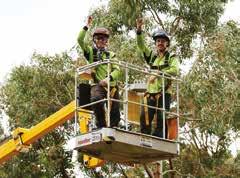



PETER DUBIEZ
Peter is the CEO of Sydneybased Enviro Frontier (EF). EF utilises over 250 Tree Companies across Australia in managing tree works on behalf of its clients in the Insurance, Government and Facilities Management sectors. All jobs are managed using its proprietary technology platform (TreeManager) making it the leading data provider for the insurance and facility management industry. The company also operates in NZ, UK and Spain.


David is a UK pioneer for conservation arb. As a qualified Arborist, he holds an Arboricultural Association Technicians Certificate - Level 3 Tech Cert (ArborA) (Diploma level 4 Equivalent) and is an International Society of Arboriculture Certified Arborist (No. UI=0372A). David is the author of ‘Tree Morphogenesis Book 1, Reduction Via Thinning Theory’, the first of a series of books, all based on research into trees and human perceptions of trees.



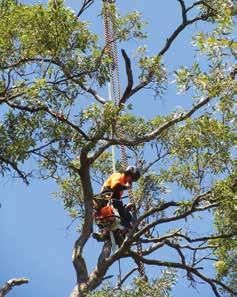
The campaign will run throughout October. The campaign kit has digital customisable resources.
Get involved and host a SafeTea chat SafeWork Australia invites people to host a SafeTea event at their workplace to start an important conversation about health and safety at work. Grab a cuppa and gather your team for a chat.

To plan a SafeTea, download SafeWork resources available at www.safeworkaustralia. gov.au/national-safe-work-month/safetea. Follow SafeWork on Socal Media and keep
your team updated with the latest news. If you feel like getting creative, decorate your SafeTea cup by wrapping it into caution tape or safety stickers. Take a picture and share on social media using the hashtag #safeworkmonth #KnowSafety #WorkSafely.
October is National Safe Work Month – a time to commit to building a safe and healthy workplace.
Being healthy and safe means being free from physical and psychological harm. No job should be unsafe and no death or injury is acceptable. A safe and healthy workplace benefits everyone. This is why, during October each year, Safe Work Australia asks businesses, employers and workers across Australia to join National Safe Work Month and commit to building safe and healthy workplaces for all Australians.
Safe Work Australia has released the theme and campaign kit for National Safe Work Month 2022 and launched the official campaign on October 1.


The theme for 2022 is ‘Know safety, work safely’ – encouraging everyone to make health and safety in the workplace a priority.
For more information visit www.safeworkaustralia.gov.au AA
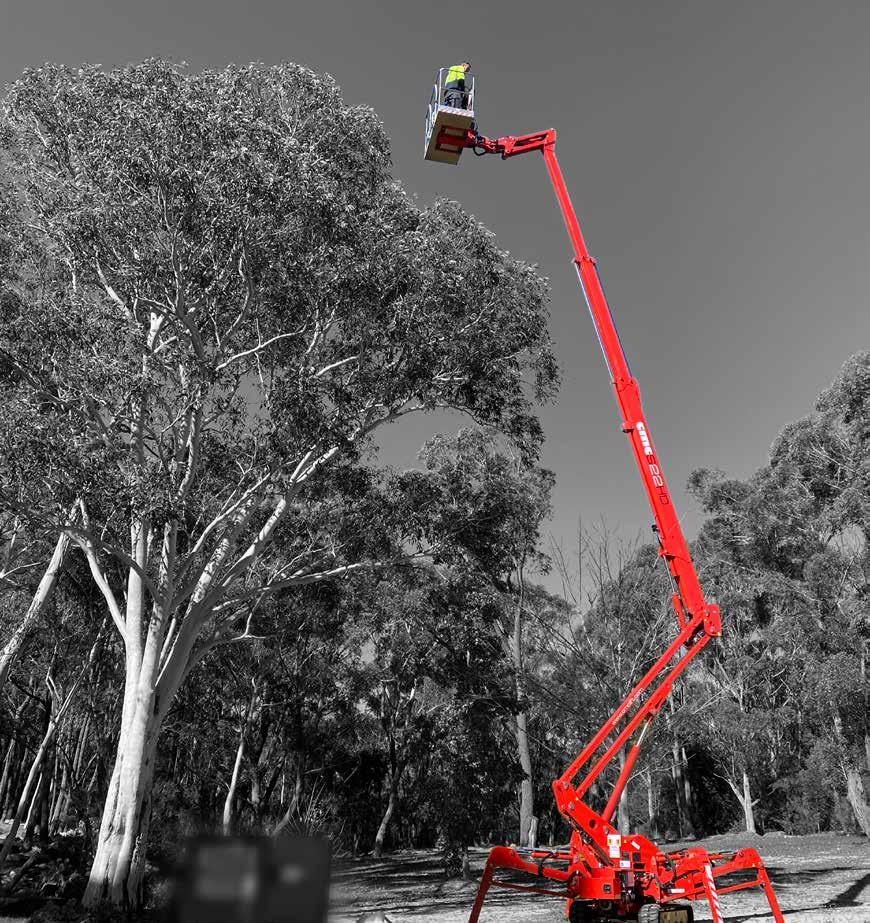
Jeff Overington, the owner and director of Treetment, initially worked for his dad’s gardening business, Kirwan Group Services, until the opportunity presented to branch out into the arbor industry. Kirwan was a large company and was finding more and more need for arborists. When the opportunity came knocking for Jeff to learn the trade, go to TAFE and start his arborist courses and licences, he grabbed the bull by the horns and hasn’t looked back since.

Jeff Overington decided to branch out on his own and set up his tree care business, Treetment, in March 2010. The last 12 years have seen Jeff and Treetment go from strength to strength, focusing on building his team and equipment up slowly but surely as he went. Today Jeff primarily relies on a range of machinery – including a Först chipper, Rayco chippers, a Rayco stumper and a CMC platform – to keep his team working safely and productively.
Speaking of equipment, his most recent purchase was a Först ST8 chipper which has proved its worth in his business several times over thanks to its small footprint but




It’s all about long-term relationships Over the years, Jeff has built a strong relationship through his long-term positive experiences with the team from Global Machinery Sales. When Jeff’s rep Ryan McKenna started sharing the advantages and features of the Först ST8, Jeff was pretty much sold on the spot. Jeff shared: “Since I started my business in 2010, Ryan has always worked hard and prepared us to avoid downtime with machines and clients. He always gives us honest advice about all matters within the arb industry –he is someone you can gain a wealth of knowledge from as he deals with so many people within the industry at all levels.”
Jeff continued, “When Ryan started sharing with me the ability of the Först ST8 to access tight areas such as laneways, rear yards and more limited street access, I knew this chipper would solve some headaches for us if it had the grunt we required. After seeing the chipper in action for the first time, I instantly knew it was going to be a winner for us and that Ryan had sent us down the right path yet again.”
After chatting with Jeff on-site in Werribee in Victoria, it doesn’t take long to figure out he’s a ‘people person’ who puts the highlights of his career thus far down to starting his own business and helping others start up in the industry. He is just that type of great guy.
It’s not the first time Jeff has been featured in The Australian Arbor Age magazine, and I was impressed when he pulled out a copy of the magazine from September 2003 that, I must say, was in excellent condition. Since then, Jeff was happy to elaborate on the times that have changed quite a bit: “Today, we operate a range of machines to suit various sizes jobs. We enjoy the excellent reliability of our machinery and excellent service from our dealers like Global Machinery Sales. Our Först ST8 chipper is another example of the improvements in machinery over the years. Recently, our main chipper broke down and took a week or two to come back online. We used the Först ST8 as our main chipper this time, and I was amazed at how well it performed. For a compact machine, it punches well above its weight.”
“After seeing the chipper in action for the first time, I instantly knew it was going to be a winner for us and that Ryan had sent us down the right path yet again.”
The next generation are coming up Jeff’s plans for the future for Treetment are to let the younger guys build on their skills and experience, and eventually take over the business in the future as Jeff approaches retirement age. When asking Jeff if he had any advice for other arborists starting on their own path, he said, “Bite the bullet early on in business and buy high quality machinery, chainsaws and safety equipment to increase turnover with less downtime and I couldn’t recommend the team at Global Machinery Sales any higher.”
In good hands with Ryan McKenna from Global Machinery Sales


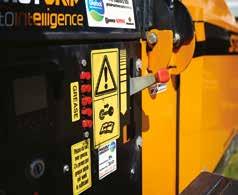
Ryan McKenna has been a Business Development Manager at Global Machinery Sales for the last 12 years and has worked with Jeff at Treetment over the previous ten years. Over that time, Ryan has sold Jeff two Rayco stump grinders (RG1645 and RG37T), two Rayco chippers (RC16.5 and RC1522), a Först ST8 chipper and awaiting the arrival of new CMC S18F spider lift.

When asking Ryan about the key benefits and features of the Först ST8, he shared, “Size for output on the ST8 is impressive. Jeff recently had their large chipper off the road for repairs, therefore had to use the Först as their primary chipper, and they could not believe the material such a small machine could process. The Först was purchased because of workload and to set up a second truck/chipper for the first time in the business history but has since become their go-to machine unless the bigger unit is specifically needed. Adding the Först to the fleet is generating income and cutting expenses because of the ability to leave the big chipper in the shed and tow around a much smaller, lighter, fuel-efficient truck and chipper combo that loses nothing in terms of productivity.”
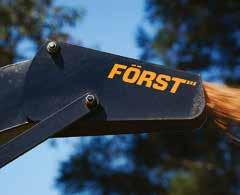

Ryan continued, “The team at Treetment are more like mates than business associates. Jeff, the owner, is an absolute ripping bloke that is not only incredibly easy to deal with but also passes on some handy tips for the horses on the odd occasion. In recent times Jeff’s son Liam has taken a more active and leading role, and he is a chip off the old block. He’s a great young kid with an excellent attitude and work ethic, which is rare these days.”
The Först and CMC lines are continuing to grow and are starting to gather brand
awareness in the market. There will be some exciting new lines arriving soon in the way of BG Lift cranes and the addition of a Queensland Global Machinery Sales branch providing a real national footprint feel.
The team at Global Machinery Sales stand by their service and support, being second to none across the board. The recent acquisition of some industryexperienced staff has only added to that level of expertise and customer service.
For more information on Treetment get in touch with Jeff Overington at treetment@live.com.au. To find out about the Global Machinery Sales equipment range visit globalmachinerysales.com.au or call 1300 072 926. AA
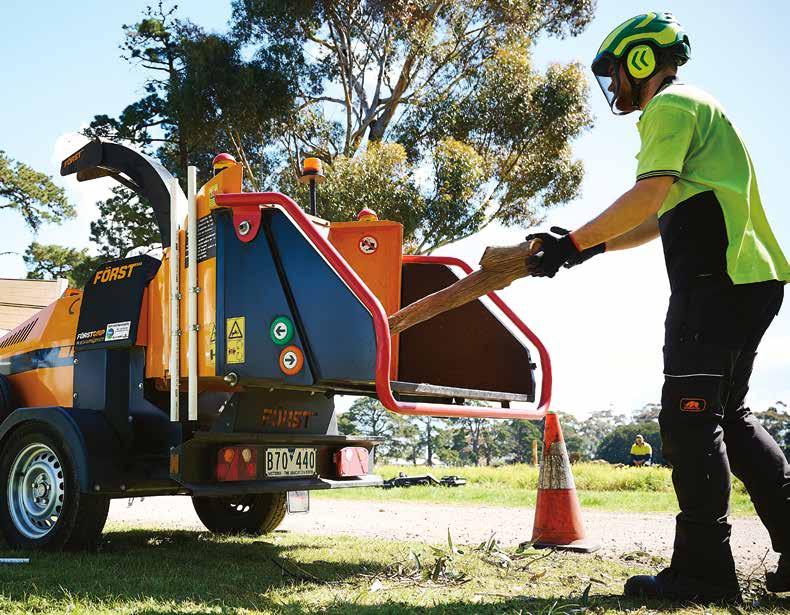

When we are in sync with ourselves, timing is everything, this many of us realise when focused on our life’s work, be it the synchronicity of business, or the synchronicity of that tree climb in flow state.
This has certainly come home to me as I write this piece. Having recently welcomed in international arboricultural change-makers Canadian Ryan Redvers (ref: Industry Profile AA Aug/Sept edition) and in this edition British arborist David Lloyd-Jones, I also found a related learning opportunity embodied in two very dynamic tree teachers, namely two Australian Red cedar trees (Case study 1 and 2 this article).
This tree lesson I discovered whilst working on David’s Industry Profile (published this edition), by more closely studying his work and his use of tree terminology, I simultaneously found myself working on a Red cedar tree I had consulted on last summer. A tree that yielded the perfect analogy of that which I am recognising in both David’s and Ryan’s work.
Red Cedar – Toona ciliata, a classic native downunder, though also native to Southern Asia, Papua New Guinea and to my surprise Afghanistan. The famous Red Gold felled to near extinction by the timber getters of the 19th Century, though the trees are naturally regenerating in a few regions of Australia their numbers are hugely diminished compared to prior to 1788.
Red Cedar - Case Study 1. Mary Valley S.E. Queensland

The first tree in this study stands at approximately 18m with a crown spread of 14.5m (North to South) at the widest point and 8m (East to West) adjacent to a Conondale Crystal Waters property. The tree has a stem diameter (at 1.5m) of 47.5cm, this is far from large for a tree of this species, though I suspect that this specimen is stunted by either being out of its natural range, or because its soil environment is lacking the associated microbiology it originally evolved with. This species is at its best in areas of high associate species diversity and a wetter climate. I personally
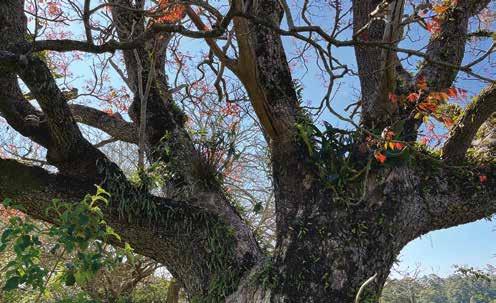
know of such a site, a rainforest retreat I visited over the space of 15 years, behind Natural Arch, Springbrook National Park, close to the QLD/NSW border.
The Red cedar in this area is naturally regenerating from sapling to mature, a rare feat, known to be a considerable challenge by commercial Red cedar growers. It is certainly true to say that commercial Australian growers need to gain a greater understanding of the lore of trees, somewhere between the disciplines of Forestry, Arboriculture and Soil Food Web science. A combination of this would enable an understanding of the needs of monoculture plantings, but this is another story.
Following my initial consultation based on advice sought by the client after significant changes to soil grade, I was called back to prune the tree. After my initial assessment the previous summer, when the (deciduous) tree was in full leaf, in mind of its phenology, condition, location and future I had advised on a 5% (all over) crown reduction or a 30% volume reduction. This was in response to the raising of soil
The RUTHMANN Bluelift SA18HB tracked spider lift maximizes production without sacrificing safety while working at height. This model features a maximum working height of 17.8m and a maximum horizontal reach of 9.3m and is perfect for areas with rough or uneven terrain. A gradeability of up to 28% and self-stabilizing system make it the ideal machine for a variety of arboreal tasks.

Ahern Australia is the exclusive distributor of these safe and reliable spider lifts in Australia.
For more information on the Ruthman Bluelift SA18HB, please call 1300 900 700 or visit ahernaustralia.com.au.

Fig. 2
grade and the establishment of piers on the tree’s western quarter of its root plate and predicted declines in that rooting zone, including possible damage to a buttress root (oh to be called in prior to the development phase). A volume reduction was recommended as the start of a series of reductions (over the next two decades) aimed at training out elongation (leverage) within the tree’s crown whilst sustaining photosynthetic capacity. Tree declines associated with root loss by mechanical shearing, root suffocation due to soil compaction and being buried, diminish tree life expectancy in the order of decades. This issue is the bane of the consulting arborist’s heart, an issue we have little choice to contend with when managing trees in the built environment. The line between development and tree retention, versus tree removal, is mostly crossed in favour of the chainsaw. Considering this tree’s potential for such decline, training the tree now, to be ‘squatter’ in the future was my intention.
The tree has grown one sided, nudged over by the presence of another tree, since felled. My desire is to assist the Red cedar to generate its crown into the air space (on the western side) vacated by the removed neighbouring tree, whilst limiting crown expansion over the property. The added benefit of this is to enable the tree to develop greater load back over its lean (which is not that acute) and over its now compromised north-western root plate. My initial plan was to also carry out a light
reduction on the tree’s upper crown to help subordinate it, to help trigger greater lateral growth where I wanted it.
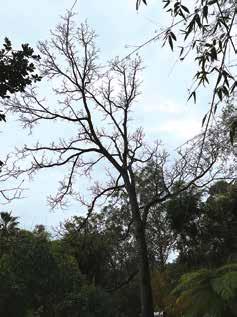
Though I knew that root loss coupled by canopy pruning was not as sympathetic as I would like, I also knew that this was significantly better than topping the tree (hammering the pump from both ends), as a quoted option, this had already been presented to the tree owner. In this case being a salesman for the less is more approach and still being a reasonably
Fig. 2: Red Cedar 1. After my phase 1 reduction (note – the photograph is deceptive, the trees central upper crown is the same height as the left side).
Fig. 3: Even from ground level with the trees winter perspective I could see the natural subordination in the upper crown (red arrows), not so the side canopies (blue arrows). Though already pruned (the eastern side) by the time I took this shot, the greater forking and longer internodes are apparent even in the photograph, the upper crown is visibly more greatly forked, with shorter internodes. As discussed, for good reason this was not apparent to me when I saw the tree in full foliage from ground at the consultancy stage. How I love the process of discovering new lessons in trees. This is something we miss when stuck in a main-stream view (that which we are taught), trees are dynamic on all levels, to be good custodians so must we be.
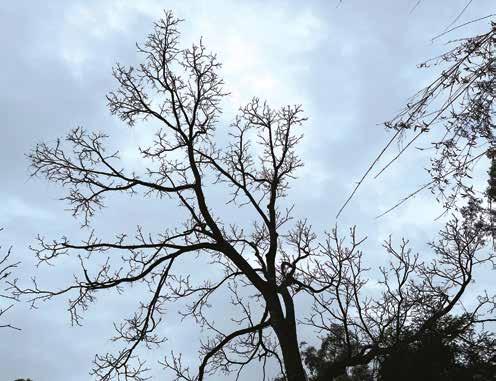
productive spurless climber, enabled me to also be the cheaper quote. Thankfully when it comes to arboriculture tree loppers cannot match us arborists, this relates to workmanship and competitiveness.
Arriving at the tree to my dismay a week late, though still in its winter coat (still not visible from ground), bud burst had just started. This was my error; I should have prompted the client to prune the tree twothree weeks earlier. When climate changes in S.E. Qld, the process is rapid, no tree waits for people-kind.
Reviewing the trees current situation aerially, considering ideas for this article and feeling sympathetic to the tree in early bud burst I reviewed the best outcome, and revised my original plan, fortunately I often work on an hourly rate so can be adaptable in favour of the tree (and as in this case, the client’s purse).
One of my new key aerial observations involved seeing that the tree’s uppermost crown was already suppressed, something I could not ascertain from the ground, particularly when the tree was in full leaf (at consultancy stage). On closer observation the internodes in the canopy making up the trees upper-crown extremity were shorter, with considerable forking, whereas the rest of the tree’s side crown was more elongated, with at the peripheries a greater distance
Fig. 3
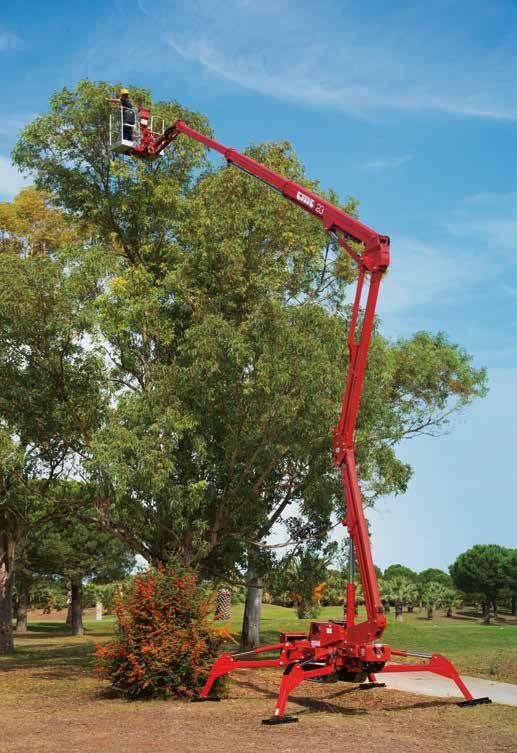
between nodes (or longer internodes), less forking and greater elongation. In-light of awakening to David’s take on growth phases in trees (discussed in his article) and Ryan’s take on training out the wild failure patterns, I recognised I was more deeply understanding the subtle trigger (removal of terminal growth) that initiates the morphogenesis that David discusses in his first book.
The thing I love about being part of the group named the Five Eyes (of Arboriculture) is being connected to an international collaboration (AUS, NZ, UK, USA and CAN), the input of this group who specialises in preparing trees for longer than ‘natural’ city life, or training Alpha-trees, is exceptional. My key goal in this profession has always

reductions have always made sense to me. With visual recognition of wind pruned, bus pruned (repetitive striking of new shoots on canopy over bus lanes), hedged and arborist (volume reductions) pruned trees, being more compact, subordinated and storm resistant, for me knowledge and instinct can come home together to roost.
Yet it was the study of David’s written work and his prompting that helped me to get this understanding much deeper on the level of mind. Look to the nodes (and the internodes) he says, or ‘Get Noady’.
Climbing closer to the Red cedar tree’s upper crown, I could see historical evidence of activity that had caused death at the terminal buds, causing the more pronounced
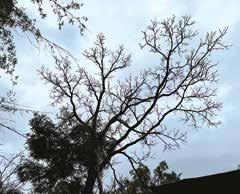
Fig. 4
been to learn, for renewed growth I see the Five Eyes as the perfect launch pad. Ryan and David are now contributing their wisdom to AA along with Guy Meilleur and I. The prerequisite to being in the Five Eyes is to understand trees, but to also be able to communicate, collaborate, educate and (perhaps the most important principle) to be open to learning. This means filtering out ego, or the desire to have a fixed view, we are here to expand the limits of mainstream arboriculture. The good news is if you are keen to learn, sustaining your subscription to The Australian Arbor Age will plug you into the direction we are being taken on, in essence we are all part of the same team.
Back to the Red cedar awakening, I have always operated as an intuitive arborist, operating on gut instinct more than logic, I suspect this is a common trait amongst many arboriculturists, though perhaps the best of us are a healthy integration of both. For me logic or knowledge of science (biological science) comes as an ‘informed’ backup for making decisions based on heart, this is a perspective that has come over time and with experience. Even as a climber I work the same way, following the ‘trees guide’ (flow) over planning a work route. On the level of instinct, volume
forking of twigs and short leaders/branches. Sitting under the tree’s upper crown it became obvious to me that nature had already done what I had intended to do with my handsaw. Upon seeing this I was both uplifted and grateful, though bud burst had only just begun, I did not want to take any energy unnecessarily away from the tree. The observation of the trees already subordinated upper crown, also saved me from climbing/working the tree’s upper two leaders and side branch (ref: red arrows Fig. 3) saving me energy too.
My sense of upliftment, more excitement, came from a deeper awakening to the subject, so what caused this subordination, this suppression of internodal growth? The answer was right in front of my nose as I only hung 1.5m below the tree’s upper crown. The buds had been grazed, I could see the dieback triggering the mass forking.
Whereas the tree’s side crown, predominantly the eastern and southern sides (as described the western crown was non-existent due to the felled neighbouring tree) was already more elongated. Though the tree’s more elongated eastern crown (overhanging the house roofline and opposite to the tree’s future potentially challenged north-western root plate) called
Fig. 4: A clear view of Red cedar 1 on the southern side and the southern limb/ leader discussed, again we can see the suppressed non-arborist-pruned uppercrown exhibiting terminal subordination (visible via the shorter internodes and greater forking, giving a visible ‘hedgehog’ effect, as compared to the lower side canopy which is less forked with longer internodes). I likewise held off pruning/subordinating the southern canopy side (under direction of the tree’s morphogenesis), because I saw that subordinating this side of the tree (as discussed in the narrative) was for a future growth phase.
me to climb, to do the great balancing act, to make reduction (all overhanging the property roofline), to subordinate it.
However, study of the tree’s southern crown revealed yet another important factor, this major side limb, mostly overhanging garden (with only periphery overhang, over shed space), though long in extension, also exhibited exceptionally well-muscled taper. As importantly, this limb added a counterbalance to the trees overall leaning structure and perhaps more importantly was also essential for crown dampening. Amid this mental computation (as with the moth suppressed upper crown) I realised the southern side of the tree was also telling me to hold off. Though this side of the tree’s canopy exhibited no current subordination, I was called to stop and pay attention. Upon analysis of my planning process, I realised the tree was again talking to my logiccentric self, it was then that I realised the far greater context of tree morphogenesis. This being a profound means to logically engage with and understand a tree’s needs, this is a silent process, similar to operating on instinct, though with more conscious awareness. My recognition here is profound for me, though understanding and operating from such a direction is one thing,
“It became obvious to me that nature had already done what I had intended to do with my handsaw.”
VERMEER AUSTRALIA HAS BEEN AT THE FOREFRONT OF INNOVATIVE SAFETY AND PERFORMANCE FEATURES IN OUR TREE CARE RANGE FOR MORE THAN 60 YEARS.

The BC2100XL is a standout in our wood chipper range. With a full function remote control, and offset horizontal feed roller, disposing of tree materials has never been safer. Plus, you’ll be backed by the service and support of Australia’s largest tree care equipment dealer network. Contact your local Vermeer Australia team to try it for yourself.
 VERMEERAUSTRALIA.COM.AU | 1300 VERMEER
Vermeer and the Vermeer logo are trademarks of Vermeer Manufacturing Company in the United States and /or other countries. © 2022 RDO Equipment Pty Ltd (trading as Vermeer Australia). All Rights Reserved.
VERMEERAUSTRALIA.COM.AU | 1300 VERMEER
Vermeer and the Vermeer logo are trademarks of Vermeer Manufacturing Company in the United States and /or other countries. © 2022 RDO Equipment Pty Ltd (trading as Vermeer Australia). All Rights Reserved.
communicating it is a whole other ‘beast of burden’, a challenge I have heard David acknowledge a number of times. Though this I know is covered in David’s books. As a progressive arboricultural writer, it is my job to communicate my understanding as a means to support David’s input, hence my introducing him to The Australian Arbor Age. In the end, I only needed to prune the tree
Fig. 5: Study of the shorter more forked shoots of the trees upper crown (yellow arrows) supports my initial aerial inspection and the imagery associated with the winter twigs (Fig. 2-4). We can clearly see longer shooting with less forking on the side canopy of the tree (white arrows Figs. 5 and 6). Based on my observations (as discussed) I am proposing that the side canopy has not been suppressed by the moth.
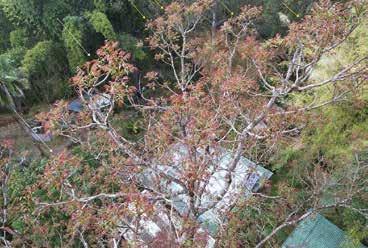
Fig. 6: Hovering over one of the western side limbs, likewise the shooting growth on this lateral branch has greater elongation and less forking, indicating no moth activity. Following the example of the moth I had no desire to supress this limb, as its growing into the western airspace is desirable to help balance the tree back over its root crown.

Fig. 7: Study of the peripheral canopy of trees is something we consulting arborists tend to do to help quantify tree health, though using these skills and focusing with greater depth on twig formation is perhaps next level arboriculture. Yet this is all about tree body language, attending to the detail is a given when we are consulting, planning, setting up, working, and rigging trees. In this case this attention to detail is essential to understand what the tree and its associates is telling us. In this picture we can see how the drone has ‘focussed’ more on the moth subordination than the unsubordinated lateral branches in the foreground, yet the difference is clear. This image was taken from the trees northern side.
on the eastern and northern sides, this is largely the side of the trees periphery that faces the house (though less now since pruning). Between arborist and moth by the time I was finished, the tree was now subordinated on the top, eastern, and northern sides. The southern side left ‘long’ to help pull up/balance or harmonise (via dampening) the trees lean and the potentially ‘future’ compromised western root plate. Remembering the initial goal was to reduce load on the eastern side, retention of the tree’s southern crown as is, more greatly assists that objective. Likewise, two young limbs I left unpruned on the western side, to help occupy the ‘new’ airspace (remember the felled tree) and further balance load away from the property. With Ryan’s dosage formula in mind, based on the patterns presented by the tree and my/the moths ‘tree’ instructed triggers laid down (involving terminal buds left and terminal buds removed), the morphogenesis of the tree will do the rest.
The next dose will be interesting, I suspect that will be on the trees southern side, though the next growth pattern or growth phase (to quote David) made by the tree I am sure will dictate dosage.
My cuts largely ranged from 2.5cm to 4cm with the largest at 6 cm, not far off the kinds of specification Guy Meilleur and Ryan Redvers have called on for their work on volume reductions.
Smaller cut sizes keep final cuts in the sapwood and within the range of effortless compartmentalisation (resistance/barrier zone formation) on behalf of the tree. Especially on a tree species with high vigour (Shigo’s definition) or a strong genetic code and good vitality (health), such as Toona ciliata.
Looking to the cause of the failed terminal
buds of the tree’s upper crown we do not have to look far, as the Cedar tip moth or Hypsipyla robusta has much press. Though certainly not with regard to mature amenity (or for that matter wild) trees. This well disliked ‘pest’ creature has prevented the Australian Red Cedar plantation industry from financially succeeding. The moth at larval stage grazes on the terminal buds and causes a constant dieback into the young trees’ crown, with a repetitious cycle of depletion resulting in death. This is not surprising considering the non-sustainable growing environments caused by farming and monoculture plantings, where soil compaction, diminished below ground microbiology and moisture retention is the norm. I only know of the Natural Arch region previously discussed in S.E. Queensland, where Red cedar trees succeed in the progression of sapling to mature trees in great numbers. To understand why, we need to look to the ‘gut’ of the soil – or the health of the soil/root interface – the rhizosphere.
In this case, coming back to Red cedar tree 1 and my experience of a number of mature specimens (Natural Arch and Toowoomba) I have worked on over the years, I have observed that grazing damage of buds in this species is not the norm (or maybe in my youth I missed the signs). One thing is for sure mechanical failure of this robust tree species is a rare event, so perhaps the moth is more active than we realise. Perhaps the Conondale example is an indicator that on established mature trees the ‘pest’ has a limited effect, or as in this case, maybe even a beneficial one, by helping reduce elongation, by supporting shorter internodes, a more integrated
taper and greater forking. The hallmarks of longevity as discussed by me, Guy Meilleur, Ryan Redvers and David Lloyd-Jones. Another point I wish to raise in support of this narrative recently came to me from a Canberran arborist James Macpherson, as part of my network he informed me of a parrot which grazes buds and twigs on local tree species there. The subject trees in his area likewise exhibiting the Alpha traits that unites our passion, integrity and interest. With this point in mind and my sharing on the Australian Arborists Network another leading arborist spoke up, of the combination of parrots by day and bats by night, training trees into healthy subordination.
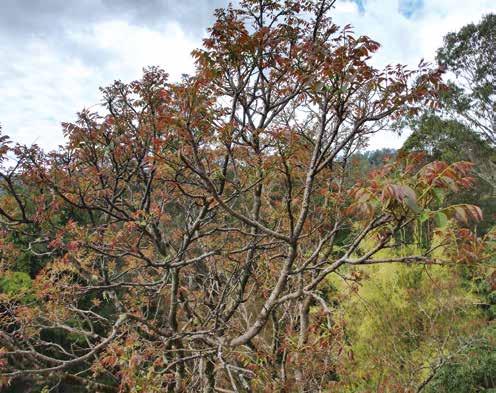
To truly understand our subject, we need to be keen observers, or good agents of the tree story, we need to get our fixed perspectives out of the way and to listen for the silent whisper (truth) of the tree. This takes passion, commitment and being still (I profess to being a hot head in my youth), the same qualities it takes to work as a professional arborist.

Fig.
Fig. 8: This image is most certainly one of the most interesting work specifications I have come up with. This is about dosage, but also about planning or mapping the trees canopy. The goal here is to ‘migrate’ the trees crown westwards (ref: the arrows). The blue dotted line roughly delineates my first dose crown reduction, along the eastern side (over the roof line) I reduced the trees crown by 1.5m. The Pink dotted lines delineate the upper crown, not pruned by me as the ‘moth’ had already suppressed the two upper leaders. The Yellow dotted line delineates a future dose for pruning, in time to initiate the subordination of the southern limb discussed. The Green dotted line marks the trees supressed western side (due to the past presence of the tree since removed), it is this portion of the cedars crown I wish to see grow westwards, for it to extend into the location of the white dotted line. Such an overall migration of the trees crown will reduce load on the trees lean and the trees compromised northwestern root plate. Note – not easily visible, my reduction on the trees eastern side (blue line) involved cuts to nodes and internodes, this was deliberate, because I was cutting into small diameter branches internodal cutting and the triggering of shoots via dormant buds was a desired outcome. Not ideal based on mainstream education, but Red cedar responds well to internodal pruning, cutting to nodes/side branches in small diameter branches can actually impact on shooting development.
Based on the interesting nature of the Red cedar - Case Study 1 and the unusual symptoms witnessed in the tree, I was compelled to return with a friend and his drone. The goal to try and capture close up footage of the moth supressed trees upper crown (made up of the two key leaders discussed) versus the unsuppressed side canopies. In truth I would like to have really zoomed in on the nodes/internodes yet seeing evidence of the shoots was a solid second best. As a younger father, I never would have imagined encouraging the younger generations to play with such technology, yet young arborists trained in the use of drones may well be of great use to arboricultural companies in the future.
I appreciate that what I am promoting in this article is not current to mainstream arboriculture, yet with reference to my
professional collaboration (the Five Eyes) and the natural evolution of arboriculture, I am suggesting that with pruning trees, more, training trees to fit space the way we want, as well as to train Alpha-trees, this is an essential pioneering step.
AA readership can expect a continued progression on this dynamic and highly interesting topic. With regard the Cedar tip moth I also suggest that this organism traditionally may well be a symbiotic ally to the Red cedar. The moth may well be scourge of the commercial red-gold industry, though that problem is more about monoculture plantations and nonsustainable forest management systems, than it actually is the moth (the only way to test that statement is to implement conservation arboriculture into this area and see if the trees/moth respond). One

Husqvarna X-Cut® is specially designed and crafted to ensure that you will reach your optimal output. Made for outstanding productivity, the chain offers superior cutting efficiency, sharpness that lasts and less need for tensioning - giving you minimum downtime and maximum results. Learn more at husqvarna.com











thing is for sure pesticide application will not crack the code of success for the commercial growers. This study has shown me that the Cedar tip moth is true to its name, it appears that (there is a PHD in this study) the moth targets the terminals over the laterals.
In closing on Case Study 1, my sympathetic pruning (another term I got from David) of this tree was also sympathetic on the client’s purse, I was able to do the job for half the time and price.
Red Cedar - Case Study 2. Mount Mee S.E. Queensland
Reflecting back on that incredible synchronicity that inspires change, I was doing one of my favourite hinterland rides (as a passionate DR 650 on road/off road rider). Mary Valley to Samford Valley S.E. Queensland. When a roadside wind pruned tree flagged me down for a picture, on turning around for that tree I saw a matriarch in the field below. Fresh out of my climbing/pruning Case Study 1, I found another legend. It’s very rare to see a Red cedar broader than tall, with that recently observed ‘hedgehog’ look about her finely subordinated crown, I was instantly hooked. With phenology in mind, finding this specimen was a few weeks on from my first case study (but in-between that and the drone footage of Case study 1), so her bud burst had moved on to an unfolding canopy.
This tree is around 9m tall, 20m broad with a trunk diameter of 1.2m (at 1.5m). Seeing her got me very excited, as with Ryan’s and David’s patterns in mind, the synchronicity of the times and my focus on tree morphogenesis (Ref: David’s Industry Profile this edition), I saw this tree as yet more validation on why. It makes good sense that we question the narrative on the world’s pests. Ultimately prior to mankind’s displacement of that which makes up the world’s ecosystems, all plants, animals,



insects, etc, all organisms had a naturally selected role in all systems, pests are only a reflection of an imbalance in nature. It’s only through destruction, separation and relocation (at the hands of people kind) that a ‘cog’ in Earth’s natural ‘machine’, becomes ‘rogue’, or becomes a pest.
Prior to the clearing of Red cedar, prior to the Red gold rush of the 19th Century, the ‘moth’ Hypsipyla robusta was not likely a pest of Toona ciliata. As I suggest, perhaps the ‘pest’ was an ally, pinching out the tips,
Fig. 9:
Cedar A very rare specimen broader than tall, pruned for resilience better than any arborist. Pruned by the Cedar tip moth –Hypsipyla robusta. A killer of commercial monoculture plantations, but a friend to established wild trees? Repetitious tip pruning for optimal taper and Alphatrees, a moth that trains the wild out of tree nature.
Fig. 10: I love this tree’s hourglass shape, this is a form of structural optimisation in itself, comparable to the figure 8 (Shigo’s pump), a structural form I witness in codominant trees with very well optimised U forks. In the best cases, those U forks are reactively squeezed into an hourglass form themselves.
Fig. 11: I see these trees form as comparable to the Titan Atlas of Greek Mythology, though in this case, uniting the heavens and Earth, as opposed to repelling them.
Fig. 12: The trees southern side (only slightly noticeable in Fig. 9), we can see elongation in the trees southwestern quarter, the question here is has the adjacent tree triggered (light competition) our subject tree to elongate because of encroachment, or was this portion of the cedars canopy free from suppression of the moth? Regardless of what caused this growth we can see that the rest of the cedar’s canopy is beautifully domed and has all the hallmarks of an Alpha-tree. I witnessed the cedars suppressed crown to be well above the adjacent trees crown, so light competition does not cut it for me, however the triggers to growth or no growth stand. This is ultimately driven by the presence of the hormone auxin in the buds or not. Regardless of the reason why, I think we can all agree that these kinds of questions and seeking the answers are intrinsic to progressive arboriculture. A climbing inspection and close up study of the tree’s nodes, internodes and shoots may well yield the answers.
Fig. 13: Toowoomba’s largest most iconic street tree, with a stem diameter of 1.52m, a height of 25m and a crown spread of 37m

the terminal buds of Toona like a Japanese bonsai gardener. When we look at the crown of Red cedar 2. We could almost describe this tree as being a giant bonsai. Whether this observation runs true, a whole heap of study of Red cedar trees Australia wide would yield an answer, trees can not lie, their status is on record in their bodies. It is up to us arborists to learn the fine art of reading mother-natures signs, her secrets. Like a mathematician reads the patterns and the shortcuts, so too can an arborist, or a naturalist read Earth.
Red Cedar - Case Study 3. Lindsay Street, Toowoomba Whilst on business in Toowoomba, seeking out a number of past tree studies, I was very grateful to come across this one (a tree I dead wooded 25 years ago) in transit to meeting a long serving arborist and ally – TRC Arboricultural Coordinator David Edwards, he maintains that this is Toowoomba’s best street tree.
This tree certainly has the hallmarks of the Alpha-tree, in fact it is this iconic specimen that inspires me to define exactly that. Alpha trees, as I recognise them are as follows:
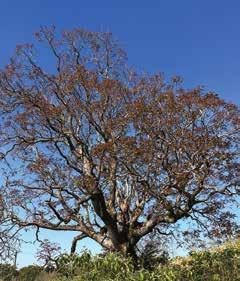
“Trees which are in the latter first third to the second third of their lifespans (or in human terms a 25-40 year old Alphamale). They are trees which have not been veteranised by natural phenomena. These are trees with open grown field pasture or paddock type crowns, as with not being veterans these are not ancient either. They are trees with all the hallmarks of optimisation, having been tried and tested by the environment, having passed with full colours. These are also trees which have developed a tight unbroken outer canopy (are terminally repetitiously hedged by nature), with multiple inner canopies, are trees as natural dampeners harmonically in a state of excellence.”
Alpha is well defined by Wikipedia, based on ancient Greek, described as Number One, The first, The Primary or the Principle
(occurrence or status of a thing). Alpha being derived from a Phoenician word (which in the western semitic) is described as Ox.
So, whether we call the worlds fittest and strongest – Alpha-trees, Ox-trees, King/ Queen-trees, this I suggest is a stand-alone subject which deserves its own definition, as with Veteran-tree or Ancient-tree – Alphatree. Once we have agreed on a name to describe the one in 10,000, as an individual, then we can consider the Alpha-species and Alpha-genera.
With thanks to arboriculture, arborists, alpha-trees, and The Australian Arbor Age
Imran Chahal, Director of AusWide Tree Services, talks to AA about the founding values that helped him build his team and took his company through tough Covid times.
Today, Imran Chahal, Director of AusWide Tree Services, has a growing team along his side. His career commenced in the 1990s when, as a teenager, he started working for a family business in the tree industry. His introduction to the tree industry was as a labourer to pick up branches and logs and carry them out to the chipper and truck.
During the labouring times, Imran taught himself thru observation, listening from the business owner and colleagues about the tree industry. An important learning was the value of the relationships with the customer and the employees.
Imran enjoyed the outdoor and social part of tree works, the client relationships. From here the possibility of having his own tree business were cultivated. Then, in 2016 he took a step in faith and started his own business, named AusWide. Imran has completed many certificates and qualifications along the way, which have assisted him to be successful, yet still a novice in building a strong and stable business.
Imran, what are important values for you and the business?
AusWide Tree Services values honesty. It is important having our customers, our staff and business partners trust us. I enjoy working in the tree industry as there is an opportunity to deliver a quality and trustworthy service to the vulnerable. At AusWide we pride ourselves on the service we deliver for housing and the elderly. We don’t like reading or hearing about the
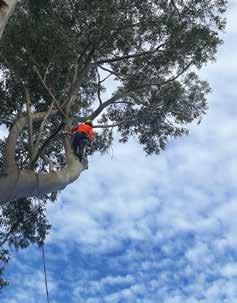
unscrupulous tree or trade that rip off the elderly, even though it is a small minority, as generally the majority of tree companies are ethical. Auswide has a focus on every interaction and every job to deliver trust with the client. We pride ourselves in making sure elderly and vulnerable are well looked after. For myself, I take trust personally. In my life to date, when trust is not reciprocated that causes issues. Trust is about mutual respect.
Our toughest period to date would definitely have been Covid. The toughest part of Covid, was through the lock downs. We needed the work to pay staff, and importantly retain our staff. We felt at times we were letting down the client too. Working through Covid was tough, it was also very confusing with the different rules that seemed to change every day. Going from lockdown to lockdown, from a drop in work in finances had an impact on me. All my team caught Covid, some were hospitalised, others had family members pass away. During that period, I also got Covid. I did not want to pass it on to my wife (who was pregnant) or my children, so I isolated myself and kept on managing and coordinating the business. I struggled a lot mentally and emotionally when Covid was at its peak. My uncle died from Covid and he was in his fifties – which had a personal impact, it made me consider what legacy can I leave my family.
Picking ourselves back up after Covid has been difficult but here we are today hoping it’s in the past and we are moving forward. I consider myself blessed with a great network of friends, staff and especially family, as they definitely assisted me to get through that period. Even now, months after the Covid peak passed, I am still dealing with the impact physically, emotionally and financially.
For me personally the key learning I take away is the persistence and the ability to be flexible when the opportunity appears. One of our current largest clients came through that persistence. I recall phoning, letting them know that we were available and asking whether there was anything we could assist. Initially we started just doing a handful of jobs a few years ago.
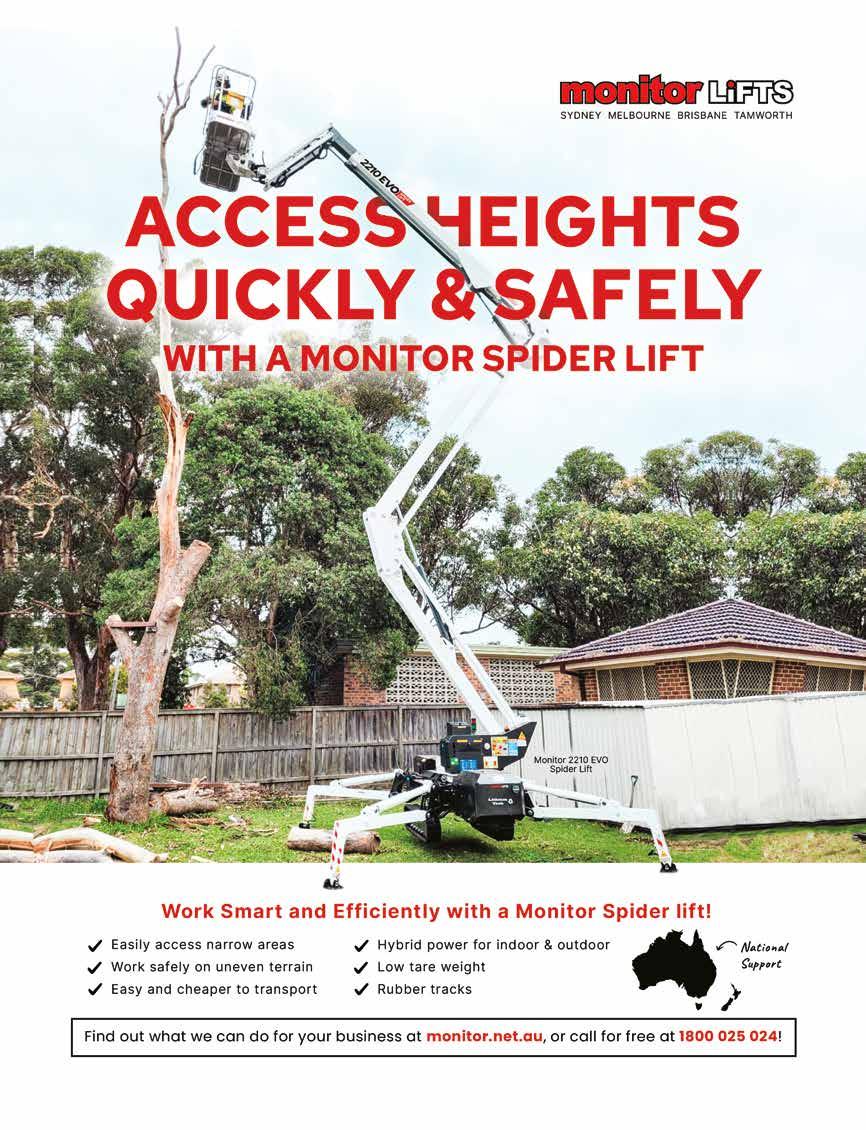
When the large storms hit Victoria in June 2021, a couple of clients requested our assistance. AusWide headed to Victoria initially with a single team. I contacted this client and informed we had a team in Victoria and if they wanted assistance, we were available. We got a few jobs in the storm effected region. Regardless where they were, how quick we needed to respond or what needed to be done we accepted and then made sure we delivered. The jobs fitted in our values to, which was ensuring we were looking after people impacted by the massive damage caused by the storm.
What started back in June 2021 as a handful of jobs is now consistently several a week, including a variety of facility and emergency works.
It is important to make sure the client fits in with our values, whether we can work together, if there is opportunity and if it is going to be profitable. From here the team at AusWide make a decision to make it work. This, I believe, is the way for a small business wanting to grow. Too many SME tree companies just think of now “what is in it for me?” My team at AusWide ensure we have one eye on the future – what is in it for all of us – that is where I see an opportunity, that is where persistence and being flexible is allowing us to build bonding business relationships.
The future for AusWide is to keep growing more and more, while staying true to our values. The company started off with one truck, one ute, one chainsaw and two workers. Today AusWide Tree Services has purchased another two trucks, two chippers, an Avant loader, a stump grinder – all key
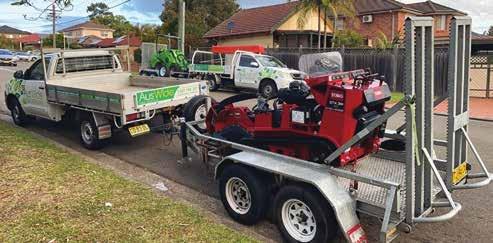

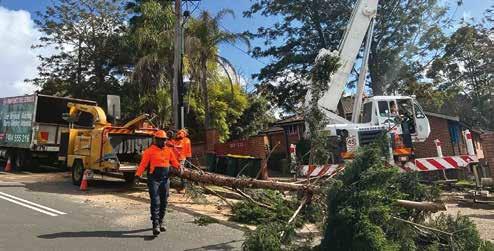
to supporting climbing and ground team requirements. We are growing faster than we expected. At AusWide we understood the value in developing our team and we deliver onsite training with relevant bodies. Most importantly, what AusWide has learnt is to ensure our staff complete other certificates such as Working with Children, Police Checks, First Aid etc., all these certificates mean we are capable and ready to support our clients.
We have built on relationships with many insurance companies which has furthered our opportunities. Our honesty and values are what I believe has allowed us to continue to grow. In 2022 a lot has changed
and keeps changing in the industry. The more we learn the more we grow. We pride our business on customer services and making that difference in the industry, taking pride in our work and acknowledging our employees. The gratitude to our employees encourages them to take pride in their work too. The more you do a good job, the better the reputation. To take pride in your work you need to know what you do not know. Then you can seek to improve. Building trust with customers and companies shows your pride at work.
For more info on AusWide visit www.auswidetreeservices.com.au AA
“At AusWide we understood the value in developing our team and we deliver onsite training with relevant bodies.”
You begin each day before dawn with a drive and determination to do more than the day before. When you move at this pace, you know to do more you need equipment that is made for more. That’s why our equipment is built from the ground up to meet your needs, delivering:
More Power and Production
Lower Operating Costs Ease of Maintenance Greater Longevity and Resale Value
If you’re ready to operate equipment that’s made to keep pace with you, then we invite you to contact the authorized dealer in your area of the world. To learn more about our equipment go to www.morbark.com
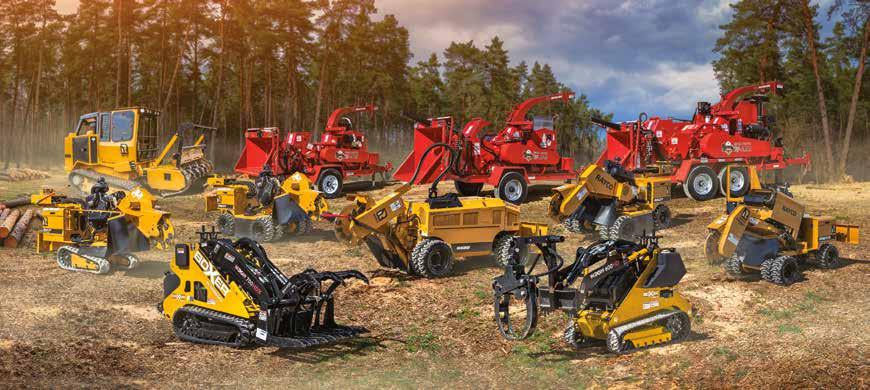
Morbark

NSW/VIC: Global Machinery Sales 1300 072 926 globalmachinerysales.com.au
QLD: Allclass Construction Equipment 1300 255 252 allclass.com.au
WA: Westco Equipment +61 (8) 9258 9333 westcoequipment.com.au
NZ: Commercial Outdoor Machinery 0800 26 66 88 commercialoutdoormachinery.co.nz
Boxer
NSW/VIC: Global Machinery Sales 1300 072 926 globalmachinerysales.com.au
QLD: Greenstar Equipment 1300767589 greenstarequip.com.au
WA: Westco Equipment +61 (8) 9258 9333 westcoequipment.com.au
NZ: Commercial Outdoor Machinery 0800 26 66 88 commercialoutdoormachinery.co.nz


NSW/VIC: Global Machinery Sales 1300 072 926 globalmachinerysales.com.au
QLD: Greenstar Equipment 1300767589 greenstarequip.com.au

health, with added fill or excavation. It is a key in determining health conditions and also a tree in nature will have its roots flare just above grade. Root flare is where the primary roots meet the base of the stem. Under the root flare below the grade one usually can observe if a tree has girdling roots or other circling roots. It’s been more of a novelty to see a pot plant that has penetrated through the pot into the free earth and in those cases the roots are usually very vigorous.
From Ryde School of Horticulture, Bruce Mcleod (God bless his soul) taught us the beauty of uncovering the soil to determine detectable issues in the roots. This for the layman is called root mapping and root probing. As for being the ‘Lorax’, my first day on the job was at Bangalla Street, Wahroonga and my father gave me the task of digging out a large declining Eucalyptus saligna (Sydney Blue Gum) root system with a block and tackle with a cable.
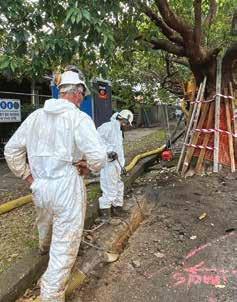

I realised that preserving trees rather than digging them out (as a novice who doesn’t know the front to the back of a tree) was preferable. The front being the leeward side, the back being the prevailing wind side where types of holding compression roots are and where tension roots are found. The weight of the canopy will also assist in determining the locality of tension and compression roots.
In review of the whole experience of unveiling the roots, we introduce the concept of ‘root mapping-testing’ and the three V’s. This includes sampling the soil at the SRZ
– Structural Root Zone and down to the soil profile checking vibrancy, vigour and volume. On the definitions of these words; Vigour if they are strong with suitable sheathing and root hairs; Vibrancy if they are in good health, and Volume if they are numerous rootlets, Adventitious, or primary secondary tertiary including rootlets or feeder roots can also be categorised into whether they are found (unveiled) and in good health or not. Root flare can provide evidence of tree
When viewing, check if the roots are layering or avoiding one direction as in previous works or geographic features that hinder root growth i.e., rock substrate or boulders, check if roots are smelling healthy and not rotten. Wafting with the hand of the odour to the face is recommended for smelling, not directly sniffing, or using a mask when detecting with the nose. This is an old science lab task so we don’t get a lung full of ammonia or biological organisms for those in the biological environmental field which will likely eventually kill us.
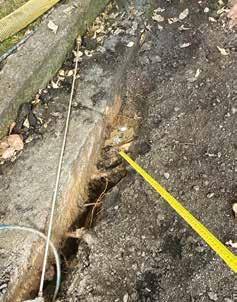
What could cause roots to smell “with odour” usually refers to anaerobic conditions. If you check the soils maps (eSPADE) and soils, it may give insight as to soil types and the main types of minerals present. Grey soil or white soil layers can indicate soil saturation from moisture. This usually means no roots are growing in this layer, unless they are adapted.
One of my old agricultural teachers, Mr Paul Udy, assisted in the learning of soils. He suggested to use the hand-feel method when determining saturation levels of soil. For other observations (e.g. soil pests, soil fungal threads, humus content, biological benefiters) count these or estimate a population, which can assist in determining whether the rhizosphere is functioning. A soil profile check and a texture test would help categorise the soils. SESL laboratories at Thornleigh are instrumental in allowing for full checks on the soil contents if further expertise is required.
In turning back to the physiology of the tree roots, a primary difference one can find is how roots differ on different sides of a tree. John Douglas (TAFE teacher of 20 years and now Land Environment Commisioner) taught that it is essential to find out which side of a tree you were viewing – the prevailing wind side and whether stronger buttressing is on the compression side of
On reading the articles from Thomas Smiley, Nelda Matheny and Sharon Lily, we understand root problems are difficult to detect.Jim McArdle on site. Hydro vac workers assisting the arborist in root mapping. Unveiled roots.

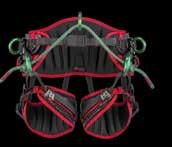
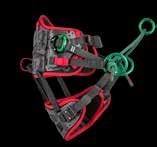



the root system to balance the forces from the prevailing wind. Another indicator of prevailing wind is to determine where tension roots are located. The tension roots side is usually opposite to the lean and whether these roots are attached uniquely to the soil layers or surface.
In your observations, determine the diameters of roots: are they flanging or seeking or sinking? Are the roots in a sandy or clay profile? Sandy profiles can have sinker roots and clay profiles can have tap roots. How many roots (count) are observed within the sample SRZ soil profiles?
In view of the industry standards for root pruning and Australian Standard® AS 49702009, cuts to roots may be required for urban infrastructure balance. Best industry practice says that roots no greater than 40mm should be cut (50mm in practice). Roots cut greater than 50mm would require specialist knowledge such as timing (when to cut), vigour, location of root (i.e. on uphill slopes), sustainability and moisture availability. A sharp tool linish or axe will seal a cut better than a saw.
when testing by shouldering or pushing with body weight the tree (sapling to immature), trees support applying pressure to the stem and check if there is visible movement on the leeward side.
Another check is to probe the soil with an insulated bar under and around the root base. My father when consulting in Ku-Ring-Ai shire has lost a crowbar down a tree hole when checking an Eucalyuptus pilularis (Large fruited Blackbutt. The Yellow Box are another tree which can do this in Bathurst where there is a strong clay soil and termite affection).
What do the AS 4970-2009 Australian standards for Tree Protection on Development Sites say in regards to the structural roots of dead trees or indeed what are we protecting on a development site when the tree next door is dead and a pool excavation comes into the nominal TPZ of this dead tree? Dead trees will still require support to stay upright; therefore, the SRZ calculated is still valid and the standards should be quoted for the TPZ when completing tree plans. Alternatively, a clause where the tree is dead and may be likely to
soil remediation through the harvesting of Pines. It’s noted that romans used to plough salt into fields conquered so that the soil fertility was unable to yield a crop.
Fertility is equally important to water in that different trees which allow for the soil biome and rhizosphere fertility. Acacia provide nitrogen fixing nodule sand value add to the soil enriching the soil profile. Indigofera australis (Australian Indigo) a leguminous shrub also adds nitrogen.

A large portion of arboricultural advice points to allowing the vegetative undercovers and understorey to companionise the tree where previously it is absent.
Acidity and alkalinity with roots. Australian trees enjoy acid soils and cannot tolerate alkaline soils readily. Mycorrhiza fungal associations tend to break down in alkaline environments. NPK-Nitrogen, Phosphorus and Potassium macro elements ratio suitable for Australian trees; described as minimal to no phosphorus and high quantities of potassium and nitrogen.
What determines whether a tree stays up or falls over in a storm? The leeward roots act as stabilisers and the windward tension roots act as cables. When the leeward roots are cut within the SRZ, there is usually irreparable impact and trees are likely to decline. When the roots are cut on the windward side, the tree can stabilise enough to withstand the change provided that there is no secondary lean with the prevailing wind. Ken James discusses wind effects and wind force likening the distribution of force to dampening that distributes its force through the roots. The Australian standards AS 49702009 suggest that 10 per cent can be cut as long as 10 per cent can be ameliorated elsewhere contiguous with the TPZ zone. Helliwell (1985) states 30 per cent can be taken out without any noticeable changes, but this is debatable in consideration of species and age and vigour. It is my practice
fail and therefore seek permission from the neighbour could be cited.
With the wettest November 2021 on record we should really review the water usage and availability of water on site and Water table issues and saltine experiences-knowledge are valuable when finding water table rising, sinking and leaving salts. In Waterloo the Platanus hybrida acerifolius (London Plane) trees were pitching at 400mm due to the water table. Melaleuca quinquenervia (Broadleaf Paperbark) a monoculture at Budgewoi Caravan Park are easily adaptable to this environment, due to the rising water table and abundance of moisture. The question on whether monocultures reduce soil fertility is worthy of study. Pinus radiata root systems degrade soils fertility through chemical secretions or loss of symbiotic relationships. Examples of Pinus spp. or monocultures of plantation timbers requiring
Roots absorb and sequester carbon and “do well” in carbon enriched remedial treatments. Carbon can be stored as CO, CO2 or C6H1206 (Glucose) within the roots. The sustainable platform is built on trees retaining carbon. One type the Quercus spp. Oak tree has a large capacity to store carbon. Soil fertility has always been linked to carbon its associated organic matter and its release. When the first non-drill method came to the fields it also increased crop yields. Other phenomenon like volcanoes and volcanic soils rich in magnesium and potassium and when these releases produce extremely fertile soils. This links back to nutrient supply and non-disturbance of soils for healthy root systems.
Problematic roots can be killed using chemicals like Tordon, Roundup, Metham and Glyphosphates (a.k.a Vaporizer, a.k.a. methylcarbamadithadithioic acid). They kill some roots when used in low concentration, while higher concentrations. 50/50 solution of glyphosate herbicide to water will also tend to kill trees when applied to roots.
In these current climatic conditions enmeshing roots are strongest when together near other trees. Consider a patch of trees and how it does its function as a living organism. A community of trees with undercanopy, companion subspecies with retained soil surface layers are stronger and
“SESL laboratories at Thornleigh are instrumental in allowing for full checks on the soil contents.”




function rhythmically in inclement weather as an organism. Trees on the edge of a patch can have compromised root systems bunting the full effects from historic weather events or storm events. These trees are usually stunted or have smaller stature because of this.
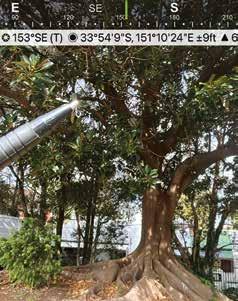
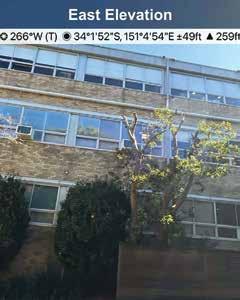
Interesting facts: the largest root system in the world is in Utah Fishlake National Forest is Pando, estimated to be several thousand years old and covers 43.6 hectares (108 acres). Even though Australia has the largest plant-seagrass stretching 180 km in Shark Bay (Wikipedia).
What about light? Tree root systems act as solar absorbers and reflectors. The Eucalyptus haemastoma (Scribbly Gum) has bark of a light whitish grey colour (with the squiggles) which reflects a lot of light in the environment it lives in. In Australia, we have a higher lux of light compared with the UK environment and this may be one reason that the darker barked trees are absorbers of heat and light compared with the lighter coloured trees which reflect the light and heat. Exposing roots in direct sunlight will lead to sunburn and lighter coloured roots that can easily be affected by exposure and dehydrate. Light coloured fences and paving can reflect heat to roots systems. Heat experience on tree roots can be detrimental in root fibre loss and root necrosis and dehydration from reflected heat on the roots.
Roots ascending under asphalt or artificial grass so that the moisture of these surfaces is absorbed by the roots, producing opportunistic roots near the under surfaces of the asphalt, concrete or barrier layer.
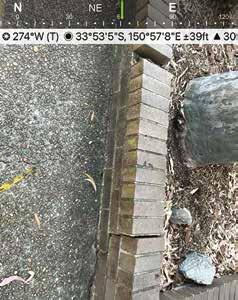

Most Australian Eucalyptus trees have a tap root that becomes modified over time. These trees can have root systems extending into four five metres through rock crevices into parent rock. Eucalyptus pilularis and digging a stump out that extended into rock in Ulundri drive Castle Hill was almost untenable. The reliance of the root to attach to the rock crevices and to utilise the rock as a supporting counterweight stabilised the tree.
Clay Versus Sand. Roots tend to be deeper in sand profiles where there is not an issue with water table, saltine or contamination. When excavating roots of Corymbia citriodora within the Port Botany area and sandy soil profiles, numerous sinker rots and a lattice of varying sinker roots meant a well attached tree.
Constraining Erosion. Roots in a bank tends to reduce erosion by holding soil together in bundles or peds. Gully erosion and landslip are two circumstances where trees may assist in the reduction of erosion and stabilising out any soil shearing forces. The 10/50 rule will state this as they restrict trees being removed from 18-degree slopes in NSW according to NSW Bushfire.
Roots as trip hazards and root infrastructure conflict. Within tree risk we have slip, trip, fails. Marking of roots to prevent falls with cordoning off, adding fill, marking with a bright wear resistant and organic paint product. Cutting of roots timing is important relating to moisture stress and weather. Cutting in dormant seasons winter are going to allow for avoiding timing near
buds breaking out where new reserves are required for growth. As the roots are storing carbohydrate banks they need to translate this energy to the leaves for growth and food production, maintenance and cell defence. Root loss has an effect on plant function and treatments carried out in dormant months rather than summer are highly recommended.
Design alterations. Can design altering assist in allowing root volume to be maintained? How compaction of roots can be retracted or reduced utilising engineering? Shaving roots may be a suitable option rather than pruning or severing completely. Bending or re-establishing a root, grafting a root are also suitable measures for retaining rootstock. With the work volume increased
sites where plumbers have mysteriously laid conduits near trees and restored the landscape is untenable. In redigging up their freshly laid turf and redigging the soil profiles where they have excavated to determine the injury to roots is necessary. Several councils have noticed this trend and orders were issued for arborists to be involved to determine the impacts and cuts to the trees and whether they would be viable from this unsupervised works.
When utilising the Hydro vacuum trucks with their pressure hose specifying the pressure to a lower level and not directly focusing on the roots with the pressure wand is essential for healthy root systems. The loss of fibrous and the uncovering to light and radiation can have detrimental effect on the foraging and support area. It is primely important to get the Hydro vacuum workers inducted into these processes and onboard to protect the roots. Bring the water jet pressure 3000psi plus down to a reasonable 2000psi or lower is required.
What impacts roots i.e. moving traffic according to the standards. Vibrations from trafficked areas have an effect of decreasing health. On a study on trees near the Pacific Highway in Sutherland, trees were very close to the road near a shopping centre and were never thriving. On checking the hard surface and the vibrations near the tree was not able to adequately function and declined.
Animals like brush turkeys and chickens. Phosphorus output of the domestic chicken can be efficient in releasing phosphorus laden droppings which reduces soil fertility

for Native trees. The actions of raking the roots while foraging can also be detrimental to tree’s roots. The pressures of working in a zoo with the type of vegetation that is suitable for the animals and couple this with compaction and deterioration of the tree. On recreational areas of high ropes courses and the compaction around the common track should be designed to prevent soil and air loss which in turn will improve root systems and in turn increase canopy cover.
Changing conditions. The changing conditions can be severe with drainage changes. ‘Oozing’ from the roots can be associated with root disease that may impact the health of the tree as with armillaria sp. Infection. Basal decay can be hard to detect but if there are indicators like lesions, decaying wood, fruiting bodies, then as fungal decay often starts at the basal area.
Sealing Roots. This is the most contradictory issue even in the 1980s when treatments were favoured over going native. Any treatment should be selected according to locality, species, vigour and age. Sealing roots with bituminous paints, physical barriers, heat treatments physical shearing with an axe to close the cells in a wound. Wrapping roots and buffering roots to reduce impacts and dehydration in construction is well documented.
Root retardants when installing a rootbarrier to increase the zone of influence of the barrier. For the project when containment of roots within an area will cause pressure to the retaining planter walls. Roots take up the role of liquids filling a void
and therefore require space for growth and expansion. Concrete or brick planters such as in Gymea TAFE are found to be difficult to maintain these trees unless the plant was specified for the planted area. Large Corymbia maculata (Spotted Gum) trees in planters will ultimately push the hard surface as the roots become larger opportunistic in seeking moisture from the hard stone or concrete surfaces or the hydraulic action of the roots tends to prise open crevices found. However, I’m not a fan of using SEPP for schools and educational facilities as a backing to remove this type of tree planted in public places unless there are issues.
The age of a tree is often required to be estimated and likewise root systems. The average growth is approximately 1cm per year on mature trees. Roots rate of growth of different species and their adaptability is also essential in estimating age. Impacts to different types of root systems will depend on soils depth, moisture content, and nutrient supply. These factors rely on temperature and rainfall or soil moisture. From the graph (above) the height (Growth) is reliant on age and the other variant considered is the species.
Hormones and the usage of root hormones when transplanting or remediating. Rootbooster, Formulae 20, Clonex, Dipn grow, Bonide or other root growth hormone chemical will signal in production of different hormones for growth, repair or defence. Adding these to cut roots can ‘burn’ or dehydrate the root. Adding a solution near the area cut is preferable in trees established. For transplants and for
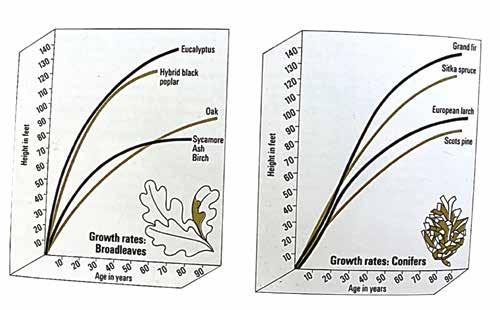
root mapping where overzealous ‘hydrovac engineers’ don’t allow for root bruising and deteriorating from the process, where adding a rooting hormone can increase the response for new roots. In specifying the pressure down from 3500psi to around 2000psi or less and ensure aiming the water needle localised soil around the roots. Ivana from Ryde TAFE, the now acting head of Arboriculture, was instrumental in proving the use of chemicals like the above.
Detecting drought stress water stress Berkeley Lab scientists have developed a new sensing technology to assess crops by “seeing” into the soil while keeping a plant’s roots intact. See Tomographic Electrical Rhizosphere Imager (TERI) above.
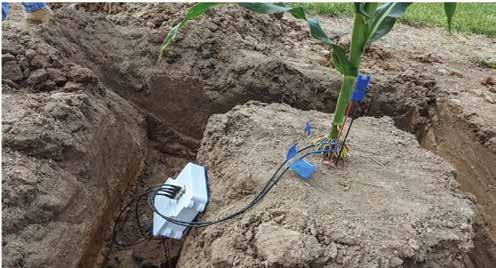
Roots and the future? Education programs on food, building, growing root systems on roofs-Greenspace. Typical days like Root and Branch Rethinking Urban Forest, Today Urban Forest where the likeminded community check in to the processes of climate and tree population becomes a voice that is worth reflecting on. The Conversation by Greg Moore is a requirement for arborists, TREENET and the collegiality of peers is becoming more and more important as our experts need experts.
Do roots systems communicate? There is evidence that mychorizal networks send out signals in response to stress like for drought. There are advantages working
in a community and many trees create an ecosystem that can moderate temperatures. This in turn can moderate temperatures of the soil and the roots can also benefit. Partners roots of different species can intertwine providing additional anchorage and exchange nutrients.
What constitutes healthy roots system. Anchored, growing, adequate supply of moisture, deep soil, uncontaminated stock and locality, moderate biotic and abiotic factors, good management. Psalm, one directs us to plant trees by the water that send out its roots by the stream. It does not fear when heat comes it is always green. Bushfires can ultimately keep heat in the ground through burning of stumps and debris or fossil gas, coal seams underground. In
the 2018 fires that swept through Armidale and the Northwest fires scarring at the base was common and some trees, which were cut, released gases so that the fire shot up from the ground out of the stumps and root system, at times melting equipment. Trapped gasses and the role of release and exchange with the atmosphere are a key function of the roots system. It appears that the process was catalysed with heat applied. In assessing roadside affected vegetation the roots were affected in a large number of trees by the heat and loss of biota in the soil. Will it rejuvenate, we hope so.
Resources we can use when looking at roots
*James Urban Up by the Roots
James.K.R.(2010) Dynamic structural Analysis of trees subject to Windloading. Melbourne University.
Mattheck, C, 2007, Updated Field Guide for Visual Tree Assessment, Karlsruhe Research Centre.
Mattheck, C & Breloer, H 1994, The Body Language of Trees – a handbook for failure analysis.
Research for Amenity Trees No 4 Sixth impression – 2008, TSO (The Stationary Office), Norwich, UK.
McArdle D&J (2014ed2022) TCAA Tree Management Guidelines. Best Industry Practice. Australia.
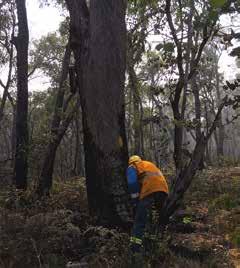
Leake, S. Elke, H, 2014, Soil for Landscape Development; Selection, Specification and Validation. CSIRO Victoria.
Watson et al, 1996, Replacing Soil in The Root Zone of Mature Trees for Better Health. Journal Arboriculture.
*Rootology, *Nelda Matheny and Clarke.
• As4970 2009 Tree Protection and Development Sites
• As4373 2007 Pruning of Amenity Trees
• As 4454 2012 Composts, soil conditioners and mulches. SAI
www.google.com/carbon+soils+and+fertility https://rest.neptune-prod.its.unimelb.edu.au/ server/api/core/bitstreams/39dcbf94-70515558-a7a3-300f292212b6/content https://newscenter.lbl.gov/2021/11/08/newtechnology-sees-underground-to-assesscrop-roots/ www.smithsonianmag.com/science-nature/ the-whispering-trees-180968084/ AA
Social and economic upheaval has challenged Australian small businesses like never before.
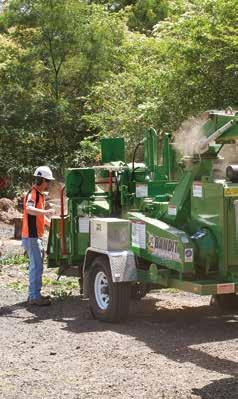
The NSW Government’s North Coast Education Flood Recovery Support
Package includes actions to alleviate financial pressures on students and their families coping with flood recovery in the flood-affected local government areas (LGAs) of Ballina, Byron, Clarence Valley, Kyogle, Lismore, Richmond Valley and Tweed. The package aims to support students to complete their training as well as increase their access to training.
As part of this package, Training Services NSW is rolling out an initiative related to fee reimbursements for students enrolled or in training during the flood period, one related to fee waivers for new students and a third one in the form of one-off support payments for Smart and Skilled providers delivering training to affected students.
The three initiatives will be available for eligible students who have been enrolled
with a Smart and Skilled provider for a full qualification(s) under Smart and Skilled.
To be eligible, students must either reside, work, or study in a location within the seven flood-affected LGAs.
To help you and your staff bounce back, TAFE NSW has a range of Australian and NSW Government subsidised training opportunities for you, your business, and your team. Whether you’re an employer looking to start a school leaver, apprentice or trainee, or you have existing employees looking to take the next step, you’ll find subsidised programs to help rebuild, re-skill, and upskill.
Explore our range of options or contact TAFE NSW on 1300 045 737 to discuss how we can find the subsidised training that’s right for your business.

For more information visit www.service.nsw.gov.au/transaction/enrol-smart-and-skilledprogram and www.tafensw.edu.au/small-business-recovery AA


When it comes to expertise, experience and professionalism in the arbor game, you will struggle to find a more respected tree service in Melbourne than The Tree Company Arboricultural Services.
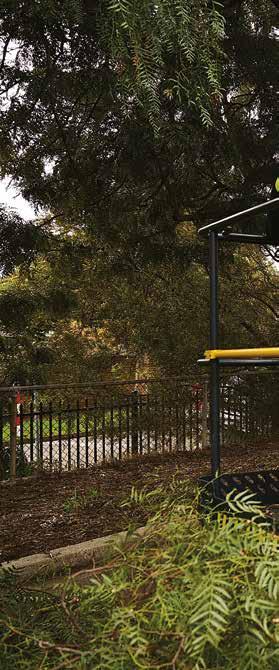
Specialising in large-scale tree management, including pruning, bracing, preservation, complete removal and plant health care, director Tom Aldous had come a long way from when he started ‘The Tree Company’ in 2000 with a VW Golf and a service station hired trailer.
Tom went straight from school to Burnley college in 1996, completing an Advanced Diploma in Horticulture/Arboriculture at the University of Melbourne. Then spent four
years working with respected arborists in Melbourne and London.
The Tree Company is among Melbourne’s most respected tree service providers, operating out of two depots (Surrey Hills and Preston), and currently employs more than 60 passionate staff.
Today, TTC has grown from small beginnings to its current stable client base, including nine local councils, golf courses, commercial clients and schools.

Carl Dalla Riva became Director in 2018 and is a qualified and well-respected Arborist with many years of industry experience within the local council and private sectors. Carl brings a wealth of knowledge and understanding to TTC, particularly in the administration and management of key clients.

On a recent trip to Melbourne, The Australian Arbor Age caught up with Tom and delved into some history on both Tom and the business. “I just didn’t want an office job, and I was drawn to arboriculture after having an induction to different industry streams on offer (landscaping, nursery, parks and gardens, arb etc.). I met some influential students, and with my rock-climbing background, I gravitated to arboriculture. Much has changed over the last 20 years, and today we rely on world-class
equipment including Monitor Lifts.
Tom has always attracted good people to his business, and several have made their way to the top over the years. “I have worked with and employed some of the best arborists in the world. Two long-standing past TTC employees recently came first and second in the 2022 ITCC Masters in Copenhagen (Barton Allen-Hall and Jerry Millar). Carl and I have been blessed with the talent we have attracted and continue to attract to our business,” said Tom.
Monitor Lifts,
Having reliable, well-trained and qualified staff is one crucial part of the mix. The other is purchasing high-quality, reliable and modern equipment, tools and machinery, and that’s precisely why TTC purchase equipment from Monitor Lifts. Tom shared: “We are currently running with a Monitor 190 19m track mounted EWP and a Ommelift 2300EX (23m tow behind). We love these machines’ safety, quality, reliability, after-
“We were so happy with our Monitor 190 that, not long after the initial purchase, we bought a Monitor 2300EX Trailer Mount.”
sales service from Monitor and excellent resale value. We demoed a few machines and settled on the Monitor 190 due to its unrivalled travel speed of 5.2km/hr, auto leveling speed, and solid steel booms and basket with additional arbor protection.


The Track system easily handles harsh and uneven terrain and, although it was more expensive than some other brands, I think it’s the Rolls Royce of spider lifts and we couldn’t be happier with it.”

Tom continued, “We were so happy with our Monitor 190 that, not long after the initial purchase, we bought a Monitor 2300EX Trailer Mount. The 2300EX is one of the tallest trailer-mounted EWP’s that can be towed behind 3.5 ton tow capacity vehicle. It has a 22.6 m vertical and 12.7m horizontal outreach and is self-propelled to access tight spots. These two lifts give us the perfect combination for our needs to work safely and efficiently for our schools, councils, and commercial clients.”
Tom and ‘The Tree Company’ have built a great relationship with the team at Monitor Lifts over the years, particularly with sales representative Chad Firth whose industry and product knowledge has proved to be
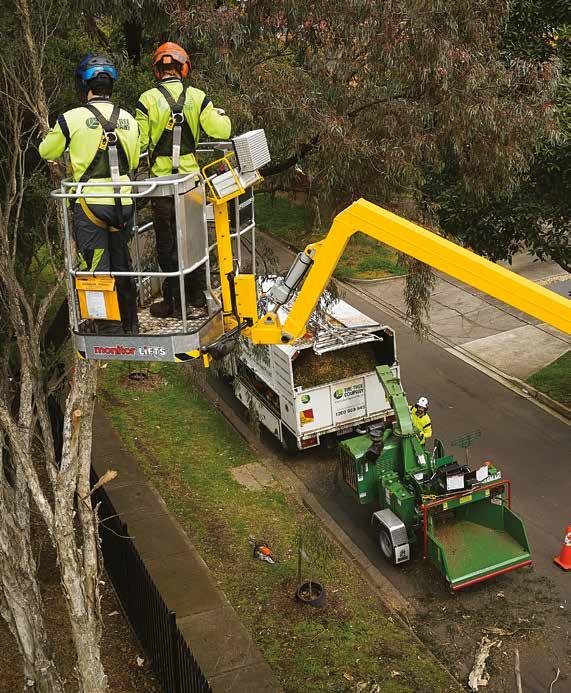
worth its weight in gold over the years.
Chatting with Tom about this relationship, he shared, “Chad has been awesome to deal with. He goes the extra mile with after-sales support, and our team always appreciates the free merch. The recommended and subsequently purchased equipment Chad has sold us over the years has made us safer, more productive, and more profitable. The quality and reliability of our equipment always help attract and retain staff.
It’s safe to say the growth and development of Monitor Lifts itself is nothing short of impressive since they imported their first ever Spider Lift into Australasia from Leguan Lifts in Finland in 1997. Monitor Lifts is a familyowned company run by Tim and Ben Joyce, who have a customer-first attitude and have built a culture based around quality products and support.
With Service centres in all major capital cities, service trailers, trucks, (and even an aeroplane for urgent applications)! Monitor can provide first class care for customers across Australia and New Zealand.
Key Features Monitor Lift customers look for in their Spider Lifts are quality, rugged reliability, user-friendly functions, and backup
support. Having sold to the Arbor Industry for 25 years, Monitor understand that efficiency is crucial in the Arbor Industry. Monitor Lifts, having over two million dollars of parts in stock and service centres available to care for their customers at short notice, shows their commitment in this area.
Finding the right mix of staff and the size of the team can be challenging for many businesses, but it seems directors Tom and Carl are happy with the current business size and model and are content with where they currently are. How could you blame them with such a great team of passionate, devoted staff and a vast mix of varied work.
It seems like if TTC is to purchase any new gear in the near future, it will be building on what they already have as they are already talking about another Monitor 190 Spider Lift as, at present, it gets booked out every day and is constantly getting shuffled between our two depots. Having one at each depot would be a logical next option.
When asking Tom if he had any advice for other Arborists, he shared, “When still on the tools, maintaining strength and condition is super important and always being aware of new technologies that make the job safer, easier and more productive is important. To quote Richard Branson: “Take care of your employees, and they will take care of your business.”
For more information call (03) 9836 0064 or visit thetreecompany.com.au. To find out more on the full range of Monitor Lifts elevated platforms call 1800 025 024 or visit monitor.net.au AA
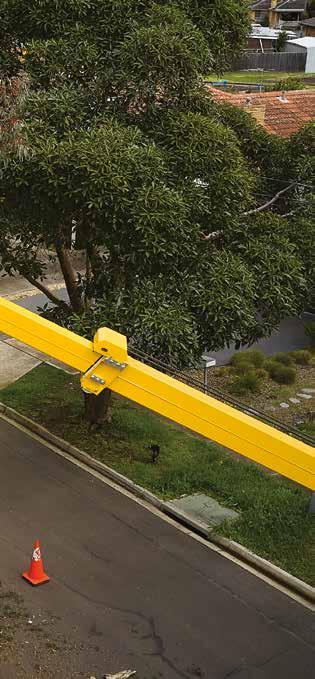



Introduction by Cassian Rupert Humphreys. Following on from our Industry Profile (August/September 2022 edition) on Canadian Arborist Ryan Redvers, I am very pleased to introduce British Arborist David Lloyd-Jones.
David, like Ryan, Guy Meilleur, New Zealander - Brad Cadwallader, AussieJames Macpherson, Scotsman - Kieran Pentland and I, are part of a collaboration looking at various strategies and practices in the field of conservation arboriculture, and hope these articles will provoke thought and encourage discussion.
As individuals we have independently experimented with conservation strategies focussed on tree longevity, with a view to training city trees to be stronger and more long lived than they generally are in nature – though the role model for this is based on the naturally most long lived trees, or

the one in 10,000 trees, as I now call them the Alpha-trees. This collaboration was born in recognition that we are promoting the same thing. Though we share unity in our observations and passion, we also bring some diversity, as each of us have a different way of communicating our understanding. I have taken on the role of bringing us together via AA , to communicate this understanding, whilst refining it for the benefit of ourselves and our profession.
Like myself, Guy Meilleur (USA) has been writing for The Australian Arbor Age for many years. It was Guy that brought David and I together in 2013, the same year we both met Ryan Revers in Toronto Canada.
David is very much an arboricultural pioneer, as a climber he started experimenting with volume reductions in the ‘80s (or as he calls it Reduction Via
Thinning) he was likely the first of us to do so in arboriculture, certainly he was the first to write about it.
Under specific guidance (without understanding why) I carried out such in Germany and the UK in the early ‘90s (under UK arborist Mark Harrison), though I never forgot those works, I did not start this as a practise on veteran trees until 2005. It was following the ISAAC conference on ancient/veteran tree management Brisbane 2008, that I understood the relevance. David is likewise a seasoned arboricultural writer – his first book ‘Tree Morphogenesis’ – he initially wrote for his clients in the late 90’s. He is currently drafting his second book. With Shigo in mind, tree care is mostly focussed on the top or bottom ends of the pump –this topic is all about supporting the top end, to buy greater time for the bottom
– which coincides with the ‘top end’ of arboricultural services, the reason why we professionals are in arboriculture.

For myself, integrating the work of this circle (no better means to do that than to collaborate on ‘paper’) is the ultimate validation in why. I hope that in sharing we help make sense to the Australian arborist that less (scaled crown reduction) is more (strength, resilience, and longevity). Our joint purpose (as I glimpse it) is to unite tree Vigour, Vitality, and i-Culture to help build the Alpha-tree, trees with the ultimate resilience, that withstand the rigours of climate, whilst helping proof cities from the rigours of ‘Climate Change’.
With David’s mantra of sympathetic tree management in mind and his approach founded on tree morphogenesis (covered in his book), I complement this introduction and topic with a new feature article of my own involving the sympathetic pruning of an Australian Red cedar in the Mary Valley Queensland. This piece reflects lessons learned by me on tree morphogenesis.
As with Ryan’s Industry Profile I have made an edit on David’s piece, likewise my intention is to honour AA, whilst hopefully adding to David’s exceptional input on training the alpha in the tree.
Cassian Humphreys
 By David Lloyd-Jones
By David Lloyd-Jones
I started my own business 37 years ago and about five years after that I went into consultancy, in addition to climbing trees which I still enjoy immensely. In truth, if I had not found arboriculture, I have no idea how my life would have turned out, and consequentially I feel that I have accumulated a great debt that I owe to trees. I am in process of paying off that Karmic debt.
Reading Ryan’s introduction, (ref: AA Aug/Sep 2022 edition) I was intrigued to see him list pattern recognition in his personal background. Like Ryan, I see patterns in unusual things and frequently in nature.
It is not something that I can easily translate into words, it being so fundamental to me that it has taken to the end of my career to properly understand it enough to choose words that will successfully relate it to others, or at least, that is how it seems to me.
So like Ryan, I saw those patterns in trees early in my career (1987-88 to be precise) and I was intrigued. Questions like “Why are they there”, “How are they connected” and then subsequently the deeper questions like “why is a less than strong fork, a benefit for the tree?”.
This apparent null hypothesis was a necessary starting point and eventually it
led to revealing exactly why weak forks are strategically and potentially, very important benefits for trees.
These fundamental questions consumed me and led me to develop myself in various ways to properly understand these conundrums, all of which leads me here and now.
Long story short, I revealed some quite fundamental aspects of tree growth and as a result I have some truth bombs for tree owners and arborists starting with the concept that trees are literally designed to be progressively pulled apart by wind, rather than fall over. Trees are designed to be pruned by wind because of the subtly enhanced variability of angles of attachment that occur at Growth Phase Changes (GPC) which radiate out through the structural canopy.
There are broadly two types of tree care. Passive – clear it up when it is on the ground or Active (proactive). Active tree care at its very best, is by nudging the tree at key points in its life, to guide it through its life and gradually design the tree for the space. What I mean here is that by simulating the triggers for branch differentiation, you can condense the ageing process to produce a series of Growth Phase Changes to produce a fully differentiated, relatively slow expanding mature form tree, that has many pruning options to
keep it subtly under control for the longest period of time and with the least frequency of repetition and always using the lightest touch.
That might be the ideal, but active tree management also involves pruning existing trees that can be done in ways that the tree owner will remember you for. That is if you take the design lead of the tree you are climbing in, when you decide which branch to remove in order to subtly reduce a tree and as a refinement of that, where would be the optimum point to remove it, in order to leave a natural looking shape and form?
At our best, we arborists can only offer a controlled slow-motion version of the effects of a storm, but we bring finesse to that process because as arborists, we have the further choice to prune to relieve structural stress on a defect, rather than doing what the wind would do, which is simply take it out to the weakest defect.
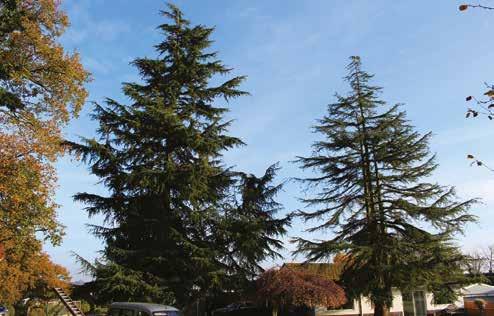
Least frequency of repetition was a pain business wise but as a result I cast my net wide over the NW of England, we were never short of new clients. I have always tried to define ‘Best Advice’ so I have tried to describe the most efficient series of interventions defined to deliver the mature tree, which can be done by strategically manipulating the tree at the twig level. For example, this could be done very quickly by drone, where the drone flyer is the trigger for morphogenesis.
It is all in the nodes or more specifically, it lies in the Nodes GPCs are different to nodes, laid down during a normal expansive phase of growth, because their formation is prompted by the absence of apical dominance.
So, in a young tree that loses its single apical tip as it emerges above the high canopy, for a brief period there will be no apical, hormonal control and consequently, reduced inhibition of the trees predisposition to fork in the absence of apical dominance hormones.
Therefore, the pattern is produced by the absence of something, an inhibitor, rather than the presence of something, an activator.
This suggests that the tree exists in a permanently activated state, that is inhibited from expressing a series of forks every year, that is the inhibiting effect of the hormones produced by the apical bud or buds that harness and give direction and strict form to the expansive phase of growth.
This phased pattern of growth forms
a pattern of forks in the canopy of a tree of roughly the same diameter branches, suggesting very strongly that the forks happened at the same time and therefore were prompted by a single environmental event.
Identifying a radial layer of the canopy where forks occur, all loosely similar diameter means that another difficult issue can be much better defined. Dose. After all, it is hard to judge 10 per cent of the foliage bearing branches of a tree while stood on the ground, then when you have ascended, you have a whole new perspective but that doesn’t make it easier. It helps if you can quantify it and there is an easy method that you can use to calibrate your perceptions.
Counting the number of branches emerging from a GPC gives a number from which 5, 10 or 15 per cent can be absolutely specified so that you can say with confidence that, if you counted the number of branches emerging from the fourth GPC and got say 44 branches, then 5 per cent might be two and a half branches, 10 per cent 4 and a half, etc. A half branch in this context where the pruning is intended at the 4th GPC, then the half would be a pruning cut at the 5th GPC. It’s still a rule of thumb, but at least it is based on counting a real resource to determine exactly what 5, 10 or 15 per cent really means. This can be useful as a team exercise so that the whole team can calibrate their feel for those subtle pruning amounts so that for the most part, you judge the dose and degree by instinct after that.
OK, so for a single stemmed tree I just described the first GPC and that’s a big
one in a tree’s life because that’s the point at which the young excurrent tree with a triangular profile, becomes the more rounded topped, excurrent, early mature tree. It’s a coming-of-age threshold.
The first is usually the easiest GPC to see in the mature tree structure unless the tree lost its tip very early, but if it occurred naturally as the young tree emerged the high canopy then the triangular shadow of the young tree is usually identifiable in the shapes and forms near the centre of the mature tree’s structural branches. But after that, there are then numerous apical buds tipping each leader and side branch. Each would need to be damaged or lost at the same time for a second GPC all over the tree, this would need to happen to leave its shadow within the subsequent successive arrangements of similarly diameter tree forks, all around the canopy.
So, the missing (from the discussion until now) environmental factors prompting these whole tree affecting events in temperate climates are likely to be late spring frosts, where tender buds are opening and susceptible to frost damage. With the second (again in temperate parts of the world) being mid-summer droughts. Either of these can and do trigger this form of subtle branch forking and diversification of the canopy, leaving its mark in the radiating pattern of same sized forks all over the tree. The timing and type of environmental trigger will vary around the world, yet these play a major part in the story that directs the trees life.
Think about that slightly differently now, with the Apical bud in mind.
The apical bud’s job initially is to gather every resource at its disposal and grow up as fast as it can to achieve its place in the high canopy and it subjugates all side branches into subservient roles, growing ever outwards from wide forked branch unions and producing carbohydrates and sugars that the
good, the infrequent absence of apical buds allows the tree to diversify its canopy and by that route, prepare to be able to actively adapt, to come through high energy climactic adversity that may occur in the future. So, design in weakness is an actual investment that prepares a tree to mitigate against potential future catastrophe. This makes acute forks an investment by the tree.
design that I found most elegantly beautiful, because what becomes clear is that trees make creative use of environmental adversities, by design. And they don’t have to do anything. Another perspective on patterns, is patterns and maths, though many in the area of biology, trees, natural studies, etc, balk at the idea of maths, there are key benefits in understanding the patterns of trees, as there are in maths, which is all about patterns and shortcuts, there are important tree parallels here.
Trees have a pre-programmed and built in, “If This - Then That” (binary), structural survival strategy
The wind blows, there’s an inopportunely timed frost or a summer drought causing the apical buds to die back unlocking the tree’s inner predisposition to diversify its canopy, and it generates forks all over.
Because its form is not so closely controlled as forks formed under apical subjugation, the number of resulting twigs resulting from that particular node is variable and of course the angles of attachments are also variable. That variability of branch attachment angle will impose subtle or even significant differences in for example, what capacity that branch has to resist shear forces imparted by wind.
Now with two or three twigs resulting, each with an apical bud to guide expansion for that twig, the blind expansion continues until another environmental fluctuation intercedes.
apical bud will use as fuel to race up. Then it achieves the high canopy and more, before getting knocked off through exposure as it helplessly grows up into faster wind streams. Then after the first GPC has occurred, multiple apical buds now take back control of their parts of the tree and the tree goes into another expansive phase of growth.
The apical buds guide expansive growth and their occasional absence due to environmental fluctuations prompts consolidation by diversification at the twig level and which is then preserved in the shapes, forms and forks of the large structural branches that those twigs eventually become.
Apical dominance reigns when times are
As a tree gets taller its structural adversities increase as various apical buds draw that growth out. As a result, the expansive outward growth is diluted in ever more directions, and individual annual growth increments (the nodes and internodes) at the ends of the many branches becomes much shorter. Shorter than would have been achieved by the single stem at the top of the younger version of the tree. The Growth Phase Changes in the outer canopy appear closer together only because of the relative lack of expansive growth in the time in between them and that sets up yet another familiar pattern.
The patterns don’t end there because trees have set up patterns of behaviours, or perhaps we should think of them as patterns of outcomes and it is this aspect of tree
Being a self-optimising structure, the tree will then try to negate and dissipate any concentration of forces represented by the fork complex, but however it tries, a small weakness in principle will remain deep in that node. It might be a notional weakness deep inside the grown-out branch, but such weaknesses are what ‘decide’ exactly how an outwardly otherwise sound branch might fail at one point rather than another in high winds. Many times, revealing some apparently subtle internal defect, created and overgrown decades or hundreds of years before.
So, a tree with a subtle designed-in “structural” weakness at the GPC, as opposed to a tree that would transfer a load uniformly and effectively down into the roots and on into the soil, as happens with most ordinary transferred wind loadings. The differentiated canopy has the further option in very strong winds, to lose peripheral parts of its canopy

“I revealed some quite fundamental aspects of tree growth and as a result I have some truth bombs for tree owners and arborists.”
The kind of classic fork failure (English Beech), that by mimicking nature we have the power to train trees out of. Though in this case (interjection by Cassian here) this recent failure is more about drought stress (wood embrittlement due to dehydration) than a bifurcation, the UK is being hammered by the worst drought in 100 years.
and survive the storm in substantial part so that the tree can set seed after the storm. That would be a significant advantage over less adaptable families of trees established in ancient geological epochs.
Acute forks, are an extreme expression of this fork angle variability and the fact that they persist, shows that overall. Being designed to be pruned by wind is such a strategic advantage, that even the susceptibility of acute forks to shear forces is no hindrance to the success of a species, in colonising and then remaining the dominant tree species in any environment by being dynamically adaptable.
Prompted by my seeing radiating patterns (made up by Growth Phase Changes) in every sphere, all radiating from the trees, following Cassian’s prompting, the reason I wanted to introduce myself with this discourse is to share that vision. Looking back on my career I now see many forms of pattern recognition as having influenced me and I realise that it’s a very important skill for all young Arborists to develop, I am also of the mind that arborists are subliminally programmed to get this.
In fact, I dedicated a chapter in my first book to a form of purely instinctual pattern recognition and its direct application in arboriculture, it was reading Ryan’s mentioning of pattern recognition (last edition) that made me realise it’s even greater significance and more, its potential significance to you.
Now if all this is second nature to you, well I think there’s a reason for that and it
probably relates to you and I being drawn to this profession because of our skillsets, then we probably stayed because of trees and frankly, cathartic stuff, like for instance, how proud I feel if I don’t fudge up an already nice tree while making it subtly smaller.
Of course, I want to do better than subtly modify a tree while not fudging it up aesthetically, but as a starting point it’s as applicable as the Hippocratic Oath, ”Do No Harm”!
That last point sounds flippant but it’s not, because if a client entrusts their beautiful tree to you, it had better still be beautiful when you have finished and this is for a very good reason, because if you were to damage the aesthetics of a tree, you damage the client’s enjoyment of that tree and once they stop enjoying that tree, they stop actively protecting it. That means the responsibility to leave a nice tree looking good after you have finished is a big one, that will test your and your grounds-people’s artistic skills.
When you found Arboriculture and realised you found your vocation, that was a very good clue that you are attuned to something, well it is that that I am trying to describe, to intensify that feeling by intensifying understanding.

Then, when you have taken your own personal journey as far as you can and you are preparing to set down after that, there is no higher purpose than for you to pass on what you have learned...
And if all this is new to you, then please read book 1 Tree Morphogenesis (Theory) to intensify your understanding of trees that you work on and get ready for book 2 (Practice), which is coming soon.
This is part of my (climbing) career end download, which is also your chance to look over my shoulder to see if I have any surprises for you. I hope you like it, but in reality, I hope that you find lots of things that you can apply in practice every day.
I started Cheshire Tree Surgeons in early 1985 alter an intensive six-week City & Guilds course. The next two and a half years were a steep learning curve, but by the time the Great Storm of 1987 hit, I had decent equipment and the necessary experience to take on the clearance of fallen and storm damaged trees from the City of London Cemetery and Crematorium. In addition to
clearing massive trees and roots from in amongst tightly packed marble monuments, we pruned many hundreds of tall Planes, Limes, Chestnuts, Oak, Ash and Cedars that were damaged on the edges of the distinctive wind gouges that crossed the site.
The maps that I used to plot the tree losses and the trees pruned showed at least two clear gouges that were up to 1km long and maybe 300m wide at the widest, clear ellipses/ where nothing survived, fading outside to varying degrees of canopy damage as the outrageously strong gust was deflected back up.
It’s fair to say that job both challenged me in every way, whilst forging me and I wouldn’t want to mention that job without mentioning the Cemetery Superintendent, Dennis Burks who physically reminded me of British heavy weight boxing champion Henry Cooper. He started as a climber and worked his way to the top job.
Dennis and I discussed our ideas of tree work, and he passed on what he had learned which wasn’t expressed in a technical way, but rather in an aesthetic way, searching for the pruning solution that felt and looked right. I learned a lot working for that man and though the job didn’t fully make me, it set me on the right path, with Dennis imparting his “feel” for tee pruning work, to me now, this is what I am trying to do for young arborists.
He encouraged me to use my instincts and he really liked how I and my team cared for his trees. If you read my book, you will see how I have taken what Dennis suggested and then I have fully explored and described that to show how we use instincts to unlock an amazing function of the ancient so called “Reptilian” brain.
Fast forward 35 years and I have fielded teams on utility work in this country and abroad, I have patented an electrical sensor for use of vehicles that could come into contact with conductors, that alarms to reveal that contact with no connection to Earth. I have a yard, bandsaw, various functional brands like CraftWoods and TreeAdvice for examples and a host of other interesting projects, not least of which as a single parent I raised my two daughters (my greatest challenge ever). All these wonderful things came directly or indirectly from trees, so when I give my clients a copy of Tree Morphogenesis, I tell them all of the above, and then I say, “So this book, is how I am just beginning to repay
the debt that I feel I owe to trees”.
You should all judge me against that statement when you read it and see if I really have paid anything off my karmic debt.
In fact, I didn’t realise it until right NOW, but I have a strong impression that if you approach your career in tree work deliberately looking for and collecting insights that you can show somebody at the end of your career, you may well have an inspirational career, because your central purpose would be to contribute to and guide the evolution of practice and thought to the next generation by passing on the detail and nuance. All of this can best be achieved by the evolved narratives and full explanations that become more likely with age, perspective, research and experience.
 David Lloyd-Jones
David Lloyd-Jones
With closing I just feel the need to speak more on dose and percentages when it comes to training alpha-trees. David carries out his reductions by thinning/pruning out the longest leaders from within the tree. Like Ryan, I have carried out my reductions from outside the canopy yet (studying the video footage of David’s maple above) I can see the outcome is the same. The disparity is in how we define
dose %, as an example I have always defined a 5 per cent reduction in height as being a 30 per cent reduction by volume, I see the need for collaboration. Having understood the benefit of using the Growth Phase Changes as a guide to determine dose, I am to bring this conversation back to our collaboration for discussion, there will be more on this subject.
You will notice a broadening, or a greater diversity of my terminology in my latest articles, this is a direct result of my opening myself to the study and integration of other writers, with homage to Guy Meilleur, Ryan Redvers and David Lloyd-Jones
Truly, I am in so much gratitude to have made sympathetic tree pruning and treemorphogenesis a study, working through this introductory piece like a sculptor seeking out the masterpiece inside the block of stone, I am both expanded and uplifted. If like me at the start of studying David’s work (captured in a 2015 AA 3 part series I did entitled - Veteran Tree Management Via Reduction, Nutrition and Exclusion) you are experiencing a brain fog, I encourage you to go easy on yourself and be open. Information that is new to our narrative often takes a while to digest. Following this Industry Profile, we can expect to hear more from David. To assist the process of
learning on this and related subjects, we on behalf of our collaboration have established a LinkedIn Group, simply called Arbor Age (David, Ryan, Guy, James and Kieran are managers). LinkedIn is a solid platform for individuals that put professionalism before personal matters. The group is currently unlisted as we develop it. For those of you serious about learning, collaborating and sharing, you are invited to join, if you are not already members of this platform you will have to create a profile and join. But this is not Facebook, this is not a platform for drama or ego. Should you be inspired, you can find me as Cassian Rupert Humphreys, I will invite you in. This platform has been principally created for The Australian Arbor Age readers, though will be open to international arborists, as with our collaboration.
For me as a writer that consciously picks new subject material, I have my own journey in relationship to trees, however, reading into Meilleur, Redvers and Lloyd-Jones I can see how a collaboration between free thinking individuals is so much more powerful than standing alone. A journey that for me started with Shigo, Mattheck, Lonsdale and Ingham, a journey that will end with awe at the silent intelligence and majesty that is the Tree AA
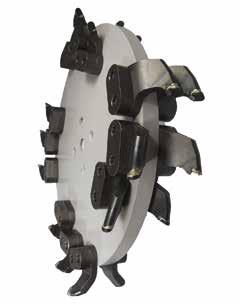

A few examples of your daily inspection should include checking the cutting boom cylinders and linkage for damage, removing any chip or residue build-up in or around the engine, inspecting the tires and rims, and more. In addition, other examples of daily maintenance include checking the engine oil level, performing a brake test, checking the cutter wheel teeth and hardware, and lubricating the jackshaft bearings, boom pivots, and cutting wheel, as well as the cutter wheel bearings. It is also essential to check and adjust the tension of the Cutting Wheel PolyChain® every ten hours of run time. Always make sure the machine is shut down before checking the tension. Then, using a belt gauge, check the PolyChain® tension
by depressing it at the centre of the span. A weekly check of the emergency stop lanyard should also be performed to ensure that the clutch is properly engaged and adjusted.

Before operating your stump cutter on the job, call 811 Before You Dig to get your utility lines marked and protect yourself from injury and expense. Ensure all bystanders or personnel are at least 25-feet away from the machine and area where you will be working. Clear all obstacles from the path of the stump cutter. Beware of hazards such as wires, ditches, etc. Make sure if using swing-out controls, the window is clean and secured in the open position. Before you begin to cut, you must let your machine warm up properly to ensure
peak performance and longevity of life. Let your engine warm-up and idle for at least two minutes, as well as warming up the hydraulic oil and cycling all controls to warm up the cylinders and lines.
After operating your Rayco Stump Cutter, you should allow the engine to continue to run with the throttle midway between slow and fast for at least 15 seconds. Before storage, your machine should be cleaned of all oil, dirt, grease, and other foreign matter. It is recommended to start and operate the machine after washing to help get rid of excess water. All exposed hydraulic cylinder rods should be coated with Valvoline Tectyl 506 oil or an equivalent to prevent damage to O-rings that could cause leakage. The battery should be stored indoors and where the temperature does not drop below 32° F. The battery should be stored on wood and should always be fully charged. As the operator, you are responsible for the required maintenance of your machine. With the proper maintenance and care, your Rayco Stump Cutter will continue to operate safely at peak performance for years to come.
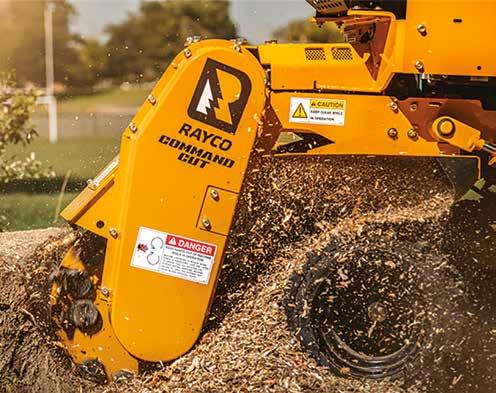
To find out more visit www.morbark.com AA
Tree Radar Australia uses a ground penetrating Radar Unit to provide the only, completely non-invasive method of tree decay detection and tree root detection available in Australia.
Tree Decay is a severe problem which can put all the structure around a tree at risk. With Tree Radar Units™ decay detection, Tree Radar can scan for decay in any tree regardless of its height. The Tree Radar unit can give an accurate read out of the severity of decay in a tree without having to penetrate the Tree’s surface.
Tree Radar Unit™ can detect and establish the root proliferation of a tree, this allows the arborist to inform developers of any structural or instability issues without the need for drilling or digging.
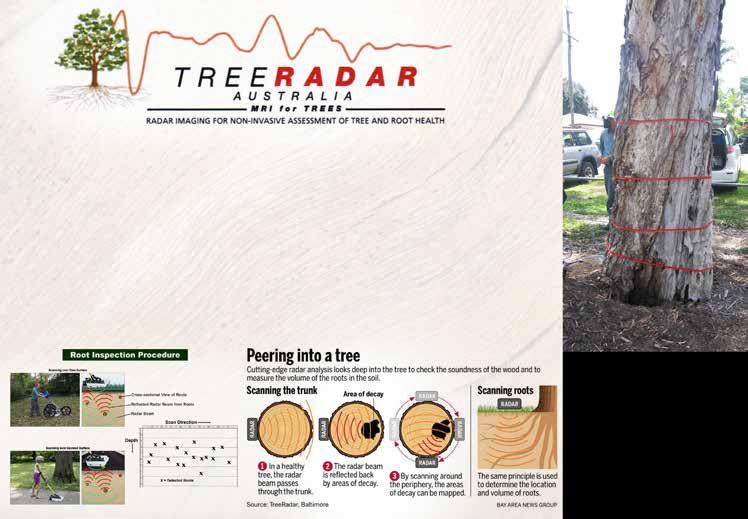

Bandit’s new 1425 Mini Beast horizontal grinder has changed the game for how Hurley Waterson and his team at Premier Tree Services have been able to tackle jobs throughout Perth.

The Bandit 1425 has all the benefits of a larger horizontal grinder scaled down into a compact, towable, 6.5-tonne machine, giving Premier Tree Services greater versatility of clients and job capability.
“I like the manoeuvrability of the wee Beast. A towable unit like this is gold,” says Hurley, Managing Director at Premier Tree Services.
“This machine allows for a broader range of customers at a more competitive price, whilst still maintaining the capabilities expected of this type of machine. This is my first Bandit to date but I’m sure it won’t be my last.”
Premier Tree Services has owned the Bandit 1425 for just under 12 months and
has been impressed with the unit’s ability in processing almost anything from root balls and palm to whole trees and dirty mulch.
“Over the past year, we have more than proven the 1425 as not just a machine for rescreening already mulched material, but also proven its capability in large scale commercial clearing scopes,” says Hurley.
“The work we’ve been doing with the machine is large scale clearing for the Mitchell Freeway PSP upgrade, mainly full eucalyptus trees.”
The screen of the Bandit 1425 can also be swapped out and changed to produce a finished mulch product to suit any number of applications. All features of the 1425 can be controlled from a remote control, allowing operation from a safe distance and reducing the number of staff onsite.
The backup support and after-sales servicing provided by Bandit has also been a
From its unique doubly secure interlocking anchor bollard, to the highly efficient oversized ball bearings, this is a block with a difference.
– Compact, lightweight
– Double security at the anchor bollard
– Ideal for both everyday rigging and winch operations
– Hollow axle facilitates multiple configurations

– Hauling loop simplifies hauling, transfer and storage
– Fairleads flairs help maintain efficiency even in suboptimal set up
major positive for Premier Tree Services.
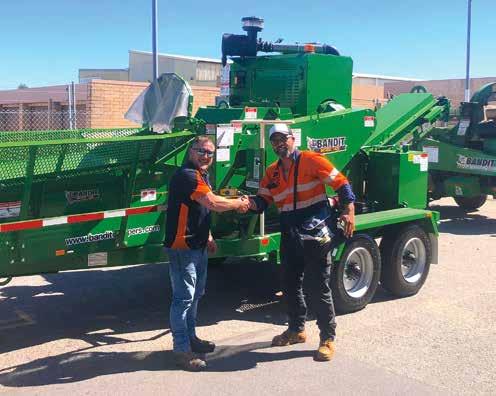
“The guys at Bandit give us great service. Everything’s top notch, I can’t fault them,” says Hurley.
“I have known Jesse for several years now and he was a friend before I became a customer, so I saw first hand how he dealt with and treated his clients. Upon seeing the 1425 Beast in the Bandit workshop, it didn’t take long to organise a test-mulch... the rest is, well... mulch!”
With more than 18 years in the residential and commercial tree care industry, and a team of internationally experienced and qualified arborists on staff, Premier Tree Service bring a wealth of knowledge and expertise.
Hurley and the team service Perth and the wider metropolitan area, specialising in tree cutting, tree removal, stump grinding, tree pruning and tree trimming.
Visit www.banditchippers.com.au and www.premiertreeservices.com.au
Built in Finland, the Monitor 190 is a solid robust machine with its steel basket and rough terrain tracked drive system. Also, the 190 happens to be the fastest Spider Lift in all of Australasia, with its 5.2km/hr Drive Speed, incredibly quick auto leveling setup ability, taking speed and efficiency on the job to a whole new level.
The tracked system has a large rolling diameter, which allows easy egress of rocks, dirt or mud, preventing build up in and around the track system. Of course, the tracks provide excellent traction yet very low ground pressure with the tracks covering a greater surface area compared to the wheeled models in the industry.
The steel rollers (rather than rubber) limits wear and tear and the smart design of the sprung track system provides smooth operation over rough terrain, clambering over gutters, and loading or unloading from the trailer.
Weighing in at only 2,680kg, the Monitor 190 is easy to transport and towable behind most utes allowing anyone with a standard car license to tow this machine on a trailer.
With 19m of working height and 9.8m of horizontal reach, the Monitor 190 is the fastest and most capable Spider Lift in Australia that can be towed on a 3.5T GVM trailer.
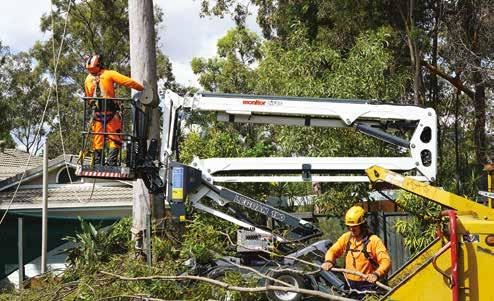
With full radio control drive, the Monitor 190 is very quick and easy to operate. Being skid-steer, the Monitor 190 can turn on the spot, allowing access to tight areas.
The auto leveling stabiliser legs are operated from the radio remote unit with one switch. This is very fast and accurate and ensures quick and safe setup.
The 190 Spider Lift is certified for two operators with an MRC of 230kg. The excellent outreach envelope ensures minimal setups and maximum efficiency.
The strong all-steel construction guarantees a long trouble-free service life. Uniquely, even the basket is steel, unlike all other Spider Lifts on the market which are softer aluminium.
Featuring dual power sources, the Monitor 190 is just as at home indoors as outdoors, making this machine one of the most versatile EWPs available. The 14hp Kubota twin cylinder diesel engine with auto-throttle is powerful, quiet, and very fuel efficient. This machine also has a 240V Electric Motor allowing the Monitor 190 to work be used, indoors also when required.
Monitor Lifts brought the Monitor Spider Lift into Australia over 25 years ago which
was the first Spider Lift ever in Australia and are still supporting the brand in Australia and NZ today with unrivalled parts and service support nation-wide.
The Monitor 190 comes standard with the following features:
• 230kg Max Rated Capacity
• Radio Controlled remote
• Auto Leveling from the remote
• Manual leveling outriggers from the cage
• 360-degree slew
• 14hp Kubota Diesel engine and 240V Electric Motor
• Direct hydraulic control for fast and smooth boom movements
• Electric emergency lowering system
• Optional 3 three speed drive, with a max drive speed of 5.2km/h
• The Monitor 190 is the only Spider Lift that is available with either tracks or 4WD tyres
The unique knuckle boom design on the Monitor 190 allows this machine to have fantastic up-and-over reach and the fly-jib provides more manoeuvrability whilst elevated.
Another great feature of the Monitor 190 is that it has an excellent amount of travel in the outrigger legs meaning the machine can be set up on slopes of up to 13° with ease and slopes of a steeper gradient using the pig-sty packing method.
Contact Monitor Lifts now for more information and an obligation free demonstration at one of Monitor's six branches. Freecall 1800 025 024 or email sales@monitor.net.au
The heavy duty Monitor 190 Spider Lift from Monitor Lifts has been a real winner since it was launched in 2019.
Waimea can supply units up to 20m working height on a car license category truck. Truck mounted EWPs can be advantageous when doing repetitive street tree maintenance or projects requiring long distance travel. Especially being a registered road going vehicle, this can prevent any hassle with traffic management or permits.
A small unit such as the Waimea E209PX is very compact and takes up a lot less room than a vehicle towing a trailer. At only 6.65m long, 2.2m wide and 3m in height, this machine is a great option for many arborists for both commercial and domestic applications. Setting up is very fast; simply pull up, engage the PTO, climb out of the vehicle, and lower the stabiliser legs and you’re right to elevate.
The Waimea Australia truck mount designs are very compact, allowing for tight access and efficient operation. There are telescopic and knuckle models available to suit any requirement.
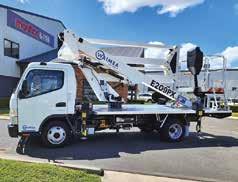
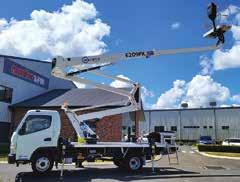
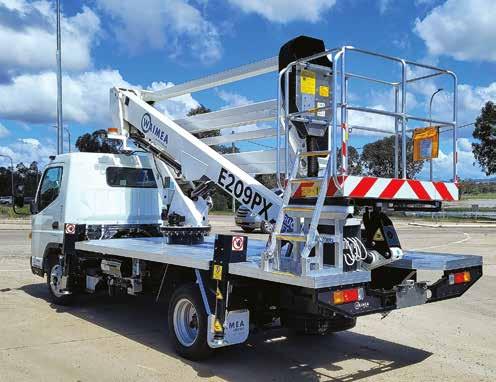
The clever double-knuckle boom design of the Waimea E209PX provides an excellent working envelope, from ground level right through to working height, with very minimal tail swing. The 2-man, 220kg MRC is available throughout the entire envelope providing unrestricted outreach.
The four vertical heavy duty stabiliser legs allow the truck to set up on all sorts of terrain and provide a very nice sturdy
base to ensure excellent stability at height. The stabiliser legs do not protrude past the edge of the truck tray, allowing setup in very confined areas and within one lane width if doing street work.
Smooth hydraulic controls allow very precise operation, providing for fast boom movements when required. Multiple functions can be made simultaneously. Platform rotation is standard, and fly jibs are available on some models. Waimea Australia can even provide radio control options, auto level, custom toolbox design, roof, and cab protection, etc. Step aboard and be ready to hit the road for the next project.
For more information on the Waimea Australia range, please call the friendly team today on (02) 8610 5601 or email trucks@waimea.net.au. Whether it’s sales or hire, or Hire 2 Own, Waimea Australia is sure to have an option to suit your needs.
Waimea Australia has a full range of truck mounted EWPs from 14m to 36m working height, with 2WD and 4WD chassis options.
Looking at spider lifts, the accessibility offered makes them an unbeatable choice, so which specifications should you be looking at?
• Good return on Investment = High Utilisation
• High Utilisation = Design + Performance + Transport + Reliability.
As you know we can be three times more productive and safer if we work out of any EWP, not to mention avoiding being fatigued halfway through the day.
Reducing labour costs is the first and foremost element that should be looked at when surveying the bigger picture of any industry, as this is the biggest cost to business that can be reduced.
One of the keys to reducing time in the air is with smarter designed ZED style boom configurations.
The True Zed style boom system is by far the most versatile and productive of all, creating a larger working envelope without outreach weight limiting, offering faster
deployment and positioning times. This, combined with providing a more natural, versatile approach to operator boom movements (as old-style arching movement designs will take up to three times longer to position), plays a massive factor in rapid positioning works such as arboriculture.

Today it is all about reducing labour cost, and that means a call for increased productivity – which comes from the superior design style offered by the Z Boom System.
As every site is different, access and set-up once in the site are always the challenges presented. This is what a Spider Lift is supposedly all about, but many of the older designs fail here.
If we cannot access the site, we lose utilisation.
• Dimensional length
• Width
• Gradeability
• Departure angles
A machine that has smaller dimensions and higher gradeability can give us the maximum ability to access the job along with assisting in setting up in tighter work areas to then conduct the job.
There are many other factors to consider once on site for set up, especially smaller stabilisation footprints, zero tail swing and up and over capabilities to deal with avoiding obstacles and obstructions. All these aspects of design and performance specification aid in increasing a machine’s utilisation factor.
Spider Lifts provide an excellent solution for a transportable all-round EWP, especially for businesses involved in working at heights.


Transportation costs are extremely important, especially when doing multiple jobs per day.
Many people miss the importance of this area, and how it relates to weights and dimensions, trailer designs, braking, load limitations and tow vehicles GVM’s. Improvisation will affect time management, all of which play additional factors in the
The Arbor Industry has been seeing the benefits of employing Elevated Work Platforms to increase safety and decrease labour times while working. But what makes an EWP a good investment for your business?
all-up and ongoing costs.
Note: Currently passing through government national roads rules is a limit that will be placed on the 50mm towing hitches for up to 3.5 tonne vehicles and will be limited at 2900kg tow capacity.
This now means more importance needs to be given when assessing tow vehicles for a more cost-effective transport solutions, especially for machines in the 17/20m mark.
The idea is to look at the machine make-up for better reliability and keep it simple.
Spider Lifts are a unique style of EWP compared to all other machines, in that they are extremely compact machines with a lot going on in a small area.

Today’s safety standards for EWP’s requires many electronic safety controls to protect the operator, but also with more electronic features such as self-levelling.
Many are running weight limiting outreach systems that limits the telescopic extension by basket weights based on 80/120/200kg

weights. These are and quite often complicated systems of load management protecting the stabilisation, which do not benefit the user in the bigger picture.
Varied stabilisation with masses of limit switches both on stabilisers and booms also create technical diagnosis nightmares.
These can be, and are in a lot of cases, costly to maintain.
A standard fixed envelope system is by far more reliable and less complicated, and machines with less features such as auto levelling, and outreach limiting etc. are smarter from a reliability point of view. Booms that house the hydraulic and electrical service are preferred for less hook ups and deterioration. All these factors make for a cost-effective approach to reliable service over the term of ownership.
When assessing Spider Lifts, CTE’s Traccess Range stands tall above the competition. They offer all of the vital features discussed above, and more.
Overall, there are many considerations a business owner or manager has to make, no matter the scale of the operation. When looking at maximising your investment, the factors discussed here are vital. To help you make the expert decision, it is vital to understand the different elements that will improve profitability.
For more info visit www.platformsales.com.au or call 1300 882 762 or 0428 986 116.
The RUTHMANN Bluelift SA18HB tracked spider lift is designed for close quarters and rough terrain, and for bringing otherwise inaccessible projects into reach.
Popular among arborists in Australia, the SA18HB model is ideal for a variety of maintenance tasks thanks to its narrow width and lightweight design.
RUTHMANN Bluelift produces safe, reliable and easy to use elevated work platforms and Ahern Australia is the exclusive distributor for the full line of these

lifts in Australia. Suitable for a wide range of applications, the SA18HB is a flexible lift that works for maintenance, construction and industrial uses.
The ergonomic design of this versatile machine allows operators to easily move the lift into position, even in tight spaces. Proportional controls deliver precise manoeuvring to make easy work of
accessing high places, such as trees and other tall objects.
The maximum working height of 17.8m and horizontal reach of 9.3m maximises production and the 230kg platform capacity can accommodate two workers for maximum efficiency. This model also has a tight turning radius for navigating narrow landscapes and other areas, and
its adjustable hydraulic chassis allows for precise positioning in any situation.
The SA18HB offers the ability to be safely driven through tight areas and on uneven terrain and is capable of climbing stairs for a wider range of indoor and outdoor applications. With a gradeability of up to 28 per cent, the self-stabilising system locks the spider lift into place for safe work at height.
For added protection, interlocking outriggers help the spider lift maintain balance on all terrain and a self-stabilising system locks the spider lift into place for safe work at height.
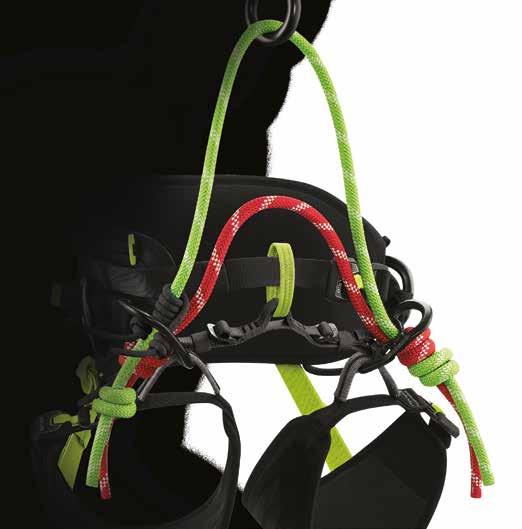
Hydraulically operated articulating outriggers can be set at individual heights, and non-marking rubber treads leave no trace on finished floors. Compact and narrow, the Bluelift SA18HB can fit into confined spaces and can be easily transported between jobs.
For more information call the Ahern Australia team on 1300 900 700 or visit ahernaustralia.com.au
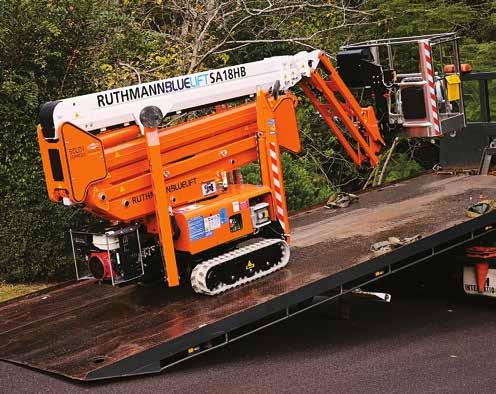

The
The team at Global Machinery Sales are always looking for the best equipment in the world to make arborists tree work more efficient and safer. They know tree work can be dangerous and they want customers to be safe and go home to their families every night, that’s why Global Machinery Sales are excited to introduce the latest addition to their product range, BG Lift Spider Cranes. Global Machinery Sales is proud to bring the
Australian market a range of compact cranes with a combination of strength and flexibility. Each lift is perfect for any lifting application, whether that’s carrying heavy objects in tight areas or simply moving materials from one place to another.
Currently, the compact cranes that are offered range from a mini compact crane boasting a 3m maximum outreach and 4.25m lifting height to medium and big compact cranes that can extend up to a maximum
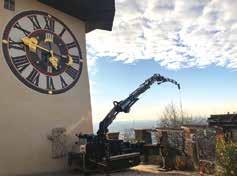
outreach of 29.4 meters and a maximum lifting height of 32.5m.
The M 060 Mini Compact Crane is a “Pick and Carry” mini crane that has a (50°) rotation and is perfect for spaces that are narrow and have limited access. The restrained weight allows the crane to operate on the base floor of upper levels, totally in compliance with the regulations.
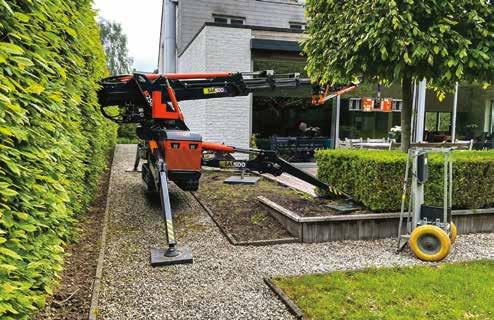
Both the M 250 and M 400 Medium Compact Cranes are equipped with advanced technologies, top-quality materials and components, to ensure the best possible performance. Thanks to their compact dimensions and lightweight design, operators can manoeuvre with millimetric precision, reducing operating time while guaranteeing total safety.
The CWE 315 and CWE 525 Big Compact Cranes are designed to accommodate maximum capacities of 9,715kg and 14,515kg, respectively. Both are designed to be compact, lightweight, agile and extremely manoeuvrable in confined spaces. As a result, these cranes are the ideal for a wide range of jobs by combining power and ultimate performance.
For more information, please call Global Machinery Sales on 1300 072 926 or visit globalmachinerysales.com.au

team at Global Machinery Sales are always looking for the best equipment in the world to make arborists tree work more efficient and safer.
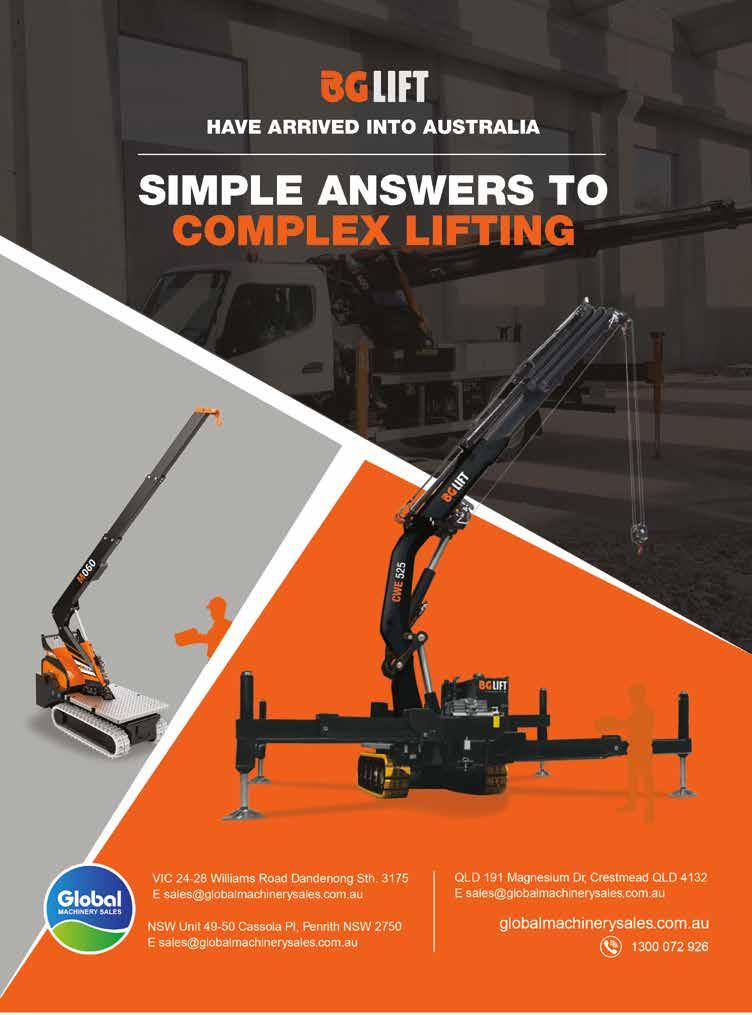
Foamstream is the leading herbicide-free solution for controlling unwanted vegetation including weeds, moss and algae.


The longer a plant is kept in the kill zone (temperatures above 57˚C) the more effective the heat will be at killing the plant.
By providing a layer of insulation on top of the water, Foamstream allows the heat in the hot water to be held within the kill zone for longer than any other alternative thermal method.

What does this mean?
Foamstream provides the most effective way of killing vegetation, meaning fewer treatment cycles are needed per year compared to any other alternative thermal method of weed control. By needing fewer treatment cycles, less labour is needed over the course of the year, reducing overhead costs for customers.
In addition to killing the plant, Foamstream also sterilises surrounding seeds and spores that haven’t yet germinated, helping reduce future weed growth.
Its patented low-pressure process combines hot water and biodegradable foam, made from natural plant oils and sugars, making it safe for use around people, animals and delicate environments. With the lance sets, it can also be used for chewing gum removal, pressure washing and general sanitation jobs too, making it a highly effective, all-round, green space and urban management system.
Committed to ensuring that they deliver the safest, most environmentally friendly products, Weeding Tech can guarantee to their customers that their foams have been cleared for use as an organic, non-toxic, safe product by the four bodies listed above and also:
• Australian Pesticides and Veterinary
• Medicines Authority
• US EPA
• Health Canada
• REACH UK
• Biogrow NZ
The active ingredient in the process is the heat in the hot water. The foam simply acts as an insulating blanket over the top of the hot water, ensuring heat is not lost to the atmosphere. Using their industry-leading machinery, Foamstream is applied to vegetation at low pressure and can be used in all weathers. Once it hits the vegetation and covers it, the foam creates a thermal blanket over the vegetation and the water.
Just like the roof on your house, the foam stops the heat from the hot water escaping to the atmosphere, trapping it and holding it directly on the plant for an extended period of time.
The heat penetrates the leaf’s waxy outer layer, travels down the stem, and into the roots – killing or severely damaging the plant, causing it to die.
By combining the most effective method, the fewest treatment cycles per year and the ability to sterilise seeds and spore, Foamstream offers customers the lowest cost of ownership and operation cost in the alternative herbicide-free space. As Foamstream can also be used for so much more than just weed control, the commercial case for using Foamstream over alternatives comes highly attractive.
Who is it for?
Foamstream is ideal for any company, contractor, council or organisation looking to reduce the use of herbicide from their practices and replace it with the most effective and efficient alternative.

It is also for any organisation that needs to carry out a wide range of jobs to manage green and urban spaces, including management of artificial surfaces.


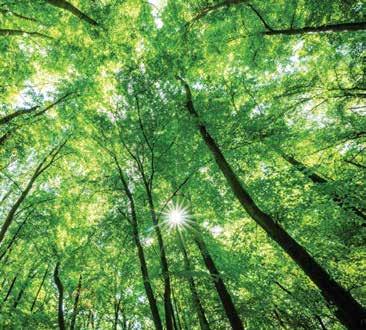
Where can it be used?
It can be used safely in public spaces, on utility sites, or in any space which requires an eco-friendly method of treatment, and poses no threat to people, animals, the environment or the operator.
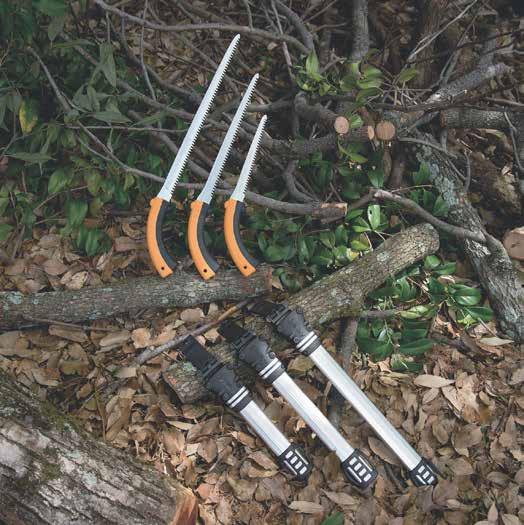
For more information on Foamstream visit weedingtechaustralia.com.au or call 0449 945 453.
Trees significantly lower the urban temperature in summer. The contribution of old trees as habitats to biodiversity is even greater than long thought: more than 2000 different species have already been discovered on a single mature oak. Thus, there are many reasons to preserve old trees as long as possible. However, especially in urban environments, mature trees often have defects (e.g. due to wrong pruning or root capping), which can endanger the stability. Therefore, we need nondestructive examination techniques to assess the condition of trees and methods to evaluate their stability on the basis of the measurements. For the technical examination of trees, two methods developed and patented by RINNTECH® in the 1980s and 1990s, have proven their worth, especially in combined application: sonic tomography and resistance drilling.
ARBOTOM® sonic tomography shows the remaining load-carrying parts of defective cross-sections and the percentage loss in load-bearing capacity compared to the intact situation.

Soil analysis with the ArboRadixTM extension of the sonic tomograph can be used not only to determine the size of the statically effective root plate in order to evaluate uprooting safety, but sometimes even to determine the position and course of statically relevant lateral roots in order to avoid injuries during ground works.
The profiles of the real RESISTOGRAPH® resistance drills (which only come from the original inventor and developer RINNTECH®) provide information that no other method has been able to determine so far:
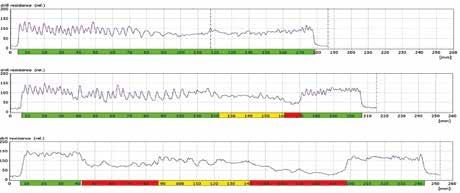
• The profile-transition from intact to deteriorated wood indicates the tendency of the fungal decay to spread: here one can see whether the tree has succeeded in compartmentalise the decay or whether the fungal degradation is spreading outwards;
• Drillings in an angle into the buttresses show whether there are root-borne fungi that degrade the wood under the base of the trunk and thus may endanger the stability;
• Even in the crown, critical spots can be examined quickly and efficiently with the light device (weight under 4kg): you can hold on to the ladder or climbing side with

It's scientifically been proven that old trees in particular make a significant contribution not only to “perceived well-being”, but also to urban air quality and the local climate.
one hand and carry out the measurement with the other;
• In many species, the tree-ring growth rates are indicated allowing to estimate the future thickness of the shell walls;








• The internal memory stores up to 10000 profiles, which can be printed out in 1:1 scale during the drilling or also displayed in high resolution on a smartphone
The results of such examinations are then the basis for the evaluation of stability using the “Allometric Self-Referencing” method, which has proven to be better and more reliable than VTA (Visual Tree Assessment) and SIA (Static Integrated Assessment): the ArboStAppTM makes it possible to carry out the final assessment at the tree, but still document it in a comprehensible way.
For more information on examination techniques visit www.ictinternational.com or call (02) 6772 6770. AA
• ICT International has been leading supplier and manufacturer of in soil and plant sensors for over 40 years, and has been the Australasian representative for Rinntech for over 15 years.
• Rinntech Products RESISTOGRAPH and ARBOTOM provide hand-held devices that precisely detect the inner condition of trees and wood.
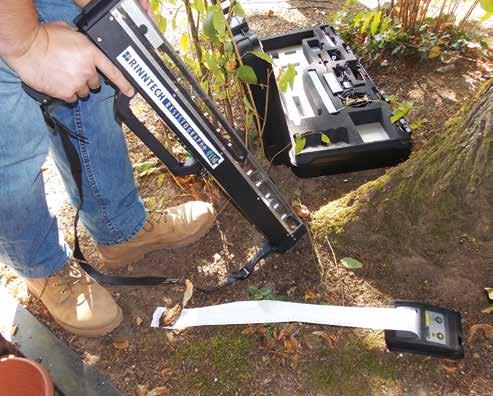

• ICT International provide sensors for measuring sap flow, plant water potential, soil moisture, and the weather.
For more information: www.ictinternational.com
CMC Spider Lifts are taking Australia and the rest of the world by storm, growing to be the largest Spider Lift manufacturer in the world.
CMC Lifts offer a range of compact and highly manoeuvrable spider lifts as well heavy-duty spider lifts with big height and reach. The CMC spider lifts that Global Machinery Sales stock for the Australian market range from 13 metres in height through to 41 metres.
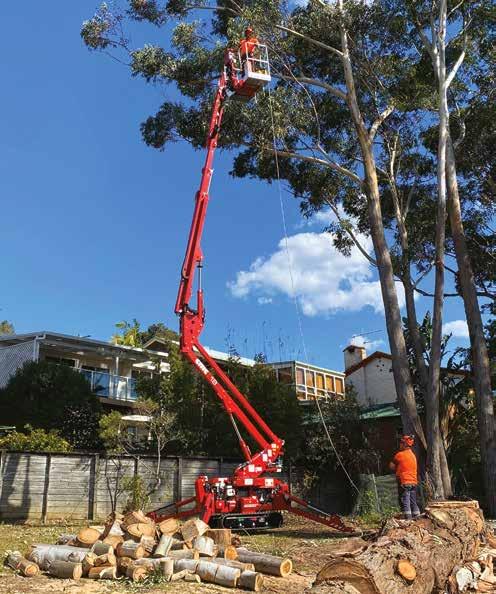

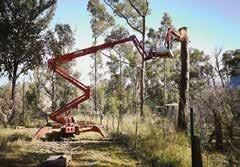

Each lift has an impressive outreach, powerful engine and large basket capacity.
The CMC S18F and S23 Spider Lifts are quickly becoming Australia’s favourite lift, selling to a range of businesses all around Australia.
The CMC S18F is a fully hydraulic and easy to operate lift that offers customers 17.78m of height and an impressive 11.15m of outreach at 80kg (8.7m at 230kg).
The S18F is lightweight and compact, meaning it is a great machine for those tight jobs where access can be limited.
The S23 model is an excellent combination of weight, strength and working height, it is a compact lift with the longest outreach in its category. The S23 model has a maximum working height of 23m and an unrestricted outreach of 12.4m, making it an extremely attractive lift for businesses that are needing outreach for difficult access jobs.
CMC Lifts are certain that they have a spider lift that will suit your business’ needs.
For more information or a demo on a particular model, please call Global Machinery Sales on 1300 072 926 or visit www.globalmachinerysales.com.au
Looking for reliable, qualified and insured tree contractors to assist with your landscape contract?
If quality of work is what you look for in your subcontractors, then next time you need tree work carried out as part of your landscape contract, consider using a member of the Tree Contractors Association (TCAA). By using a TCAA member you are guaranteed a quality service from a fully insured member with many years of experience in the tree industry.
The TCAA and its members provide ‘tree work’ nationally to corporations, councils, government departments and the general public. The TCAA members have agreed rates to ensure competitive costing of work quoted.
TCAA members offer comprehensive
tree maintenance and management services, at competitive rates, carried out by experienced, qualified professionals.
The introduction of industry licence as a continual improvement for contractor standards of work and training ensures that members will complete and maintain work to Safe Work Australia requirements.
The TCAA members can assist with your site requirements for tree trimming, removal, stump grinding, chipping or all onsite consultations that require AQF 5 consulting arborists.
To find your nearest member please use the www.tcaa.com.au web link.
Then look no further. The Tree Contractors Association of Australia Inc. is a network of fully insured, qualified and experienced tree contractors. Our we audit our members annually to ensure they comply with the highest standards.

Don’t risk getting complaints from your customers from shoddy tree work. Insist on the best!
Australia Inc.
CMC Spider Lifts are taking the Australian market by storm. All models are Australian Design Verified and ready to work.
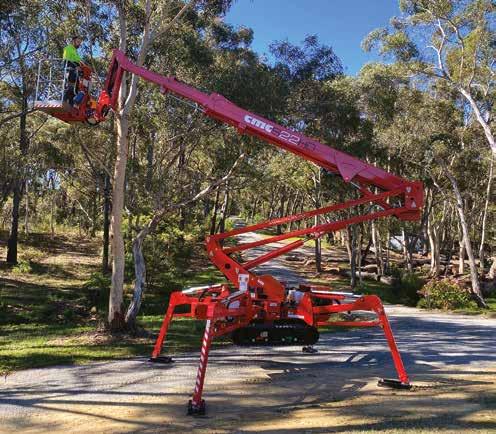
CMC Aerial Platforms offer a range of compact and highly manoeuvrable spider lifts as well heavy duty spider lifts with big height and reach. The CMC spider lifts that Global Machinery Sales stock for the Australian market range from 13 metres in height through to 41 metres. Each lift has an impressive outreach, powerful engine and large basket capacity. The team at Global Machinery Sales have worked diligently with top EWP dealers in America and Europe to bring you the world renowned leader.
The CMC S22HD is an articulated platform with a pantograph and a two-stage telescopic boom plus jib. This combination, together with its outriggers of high levelling capacity, three working areas and long
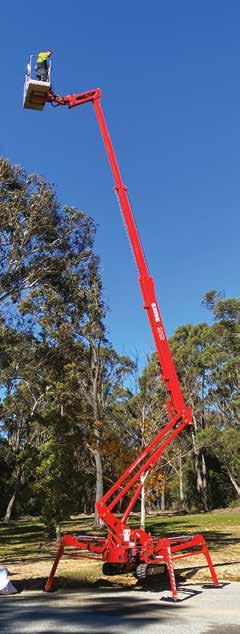

horizontal reach, makes it ideal for all outdoor works, even in extreme conditions. The JIB completes and increases the potential of the HD range. To the potential of the articulated stabilisers with high levelling capacities, 21.6 metres of maximum working height and 12.50 metres of outreach plus Jib for a maximum load capacity of 230 kg.
Thanks to the three working areas and the multiple travel speeds, the S22HD is a track platform with truly exceptional performance, suitable for every job.
For more information call the team at Global Machinery Sales on 1300 072 926 or visit globalmachinerysales.com.au

Teufelberger Treecare has been present for many years on the Australian market and offers nearly 450 products to arborists through its network of dealers. But Teufelberger undertaken a global overhaul of its distribution system and its partnerships in order to be able to offer the best products and services to all arborists on the Australian continent.
The Austrian company signed an exclusive import and distribution agreement earlier this year with Sydney-based RISE® Equipment, who was founded by Clancy Simpson. RISE® Equipment has developed a nationwide dealer network and will be taking part in multiple events in-country and maintaining Teufelberger stock locally in Australia to service the demands of the market for arborist products.
RISE® Equipment (rise-au.com) is a
professional equipment supplier for the heights industry. It has been specifically tailored to a range of at height professions including arborists, rope access technicians and riggers (entertainment riggers –industrial riggers – stunt riggers).
Teufelberger has also decided to expand its ambassador program to Australia with the addition of Chris Maata, an Australian arborist living in the Sydney area, who will

strengthen the team already made up of 24 climbers from 15 countries. His main missions will be to conduct workshops to promote good practice and safety, provide technical assistance to partners and resellers of Teufelberger products and promote all tree-related professions. It is likely that Chris will be supported by a second ambassador during 2023, stay tuned!
In 2022, Teufelberger is excited to launch two new treeMOTION Essential and Pro harnesses which replace the old S.Light, Standard and Evo versions. Teufelberger has collected over the last two years the input and feedback from hundreds of climbers, dozens of partners and 25 ambassadors in order to propose the best harness that Teufelberger has ever designed and manufactured.
For more information visit www.teufelberger.com AA
Teufelberger Treecare strengthens its position in Australia and signs a strategic agreement.
You may already know the name Austbrokers SPT. It is a name that is well regarded and often referred to by many Horticultural enthusiasts when mentioning insurance, and it is for good reason.
Since 2002, when Austbrokers SPT began their Horticulture Program, it has grown into a specialised division of their business that now offers many benefits – most impressively up to $50,000,000 Public Liability protection.
We caught up with the company’s Director, Arthur Kinnas, to find out why their Program is so successful.
“Our Horticultural Program has expanded considerably over the years. We have helped hundreds of clients with their business risks, offering them peace of mind knowing they are protected and have the right insurance in place.”
“Without doubt, our growth is because of our dedicated team of brokers who go above and beyond to understand your business risks. This enables them to provide the right advice and insurance solutions, which are specifically tailored to your needs.”
“The specialised Public Liability Insurance that Austbrokers SPT offers is available to all those in the industry – from Line Inspectors to Arborists and those specialising in Powerline Corridors.”
Benefits of Austbrokers SPT’s Horticultural Program are the following:
• Public Liability cover up to $50,000,000 including powerline work
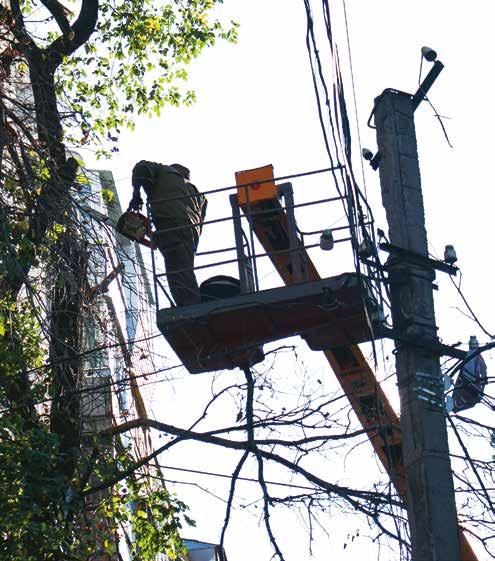
• Backed by major international insurance companies with an Australian Standard and Poor’s rating level greater than “A” strength
• A dedicated Broker with 20 years’ experience in this field who is committed to assisting you with your needs
• Quick turnaround of documentation including Certificates of Currency
• Internal Claims Team dedicated to handling
Did you know Austbrokers SPT can provide cover for up to $50,000,000 public liability?
“Without doubt, our growth is because of our dedicated team of brokers who go above and beyond to understand your business risks.”
your claims with Australian based insurer claims teams
• Competitive premiums and level of cover
• Comprehensive Machinery, Truck and Tools of Trade cover provided under one insurance package
Austbrokers SPT are passionate about the Horticultural Industry, and it is this passion that continues to drive them to exceed their clients’ expectations.
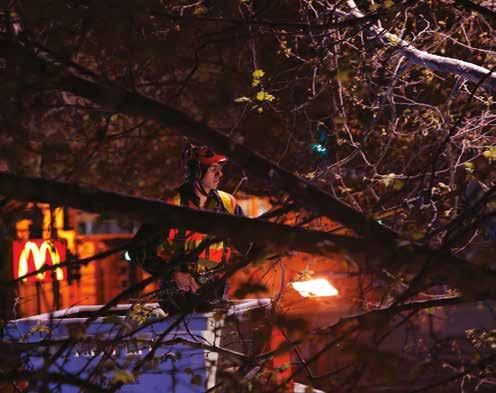
To discuss your insurances, contact the team at Austbrokers SPT on info@sptinsurance.com.au or call (02) 9525 9311.
This advice has been prepared without taking in account your personal objectives, financial situation or needs. Please refer to the Product Disclosure Statement (PDS) before deciding whether to acquire our product. Please contact our office if you would like to receive a copy of the PDS.

Too many businesses underestimate the caution required in storing and transporting dangerous goods.
Dangerous goods come in many shapes and sizes: from those that require hazmat suits, like radioactive and infectious materials, to seemingly innocuous items, like medicines and cleaning products.
You’d be hard-pressed to find a business that doesn’t handle some sort of dangerous goods. But too many businesses underestimate the dangers associated with storing and transporting these goods and other hazardous materials.
In fact, up to 40 per cent of shippers are unaware of regulations governing the transportation of dangerous goods, a recent survey has found. And that has big ramifications for your business’ supply chain and liabilities.
Here we take a look at best practice when dealing with dangerous goods, and how you can prepare yourself for a worst-case scenario.
The nine classes of dangerous goods
You get ready for work in the morning –spray on some deodorant, add a touch of perfume or cologne, grab your mobile phone, leave the house, unlock your car and open the garage door.
You’ve just come into contact with a bunch of dangerous goods – aerosols, alcohol, lithium batteries. How many more will you use, buy or sell throughout your working day?
Of course, that depends largely on your line of work, but there are nine classes of dangerous goods that you, and those in your supply chain, may come into contact with:
• Explosives
• Gases
• Flammable liquids
• Flammable solids
• Oxidising substances and organic peroxides
• Toxic and infectious substances
• Radioactive material
• Corrosive substances
• Dangerous substances and articles.

These all have to be handled and stored with care.
Dangerous goods handling and storage – best practice
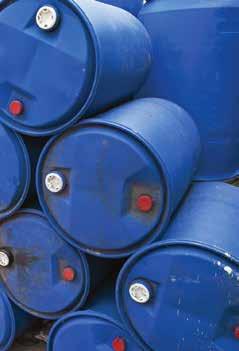
The rules and regulations governing the safe transport, storage and use of dangerous goods in Australia are rather complicated.
In terms of road and rail transport, there’s been some recent rationalisation, with the National Transport Commission introducing the Australian Dangerous Goods Code, which came into full force in July 2019.
The code outlines best practice in regards to classification, packaging and performance testing, use of bulk containers, marking and placarding, vehicle requirements, segregation and stowage, documentation, safety
equipment and emergency procedures.
That said, it remains up to state and territory departments to authoritatively advise on operational issues related to the code. Beyond road and rail transport, the rules around dangerous goods become as complex and hazardous as the materials themselves.
Dangerous goods are dealt with at various levels of Australian government and across various departments – including transport, health, environment, and workplace health and safety.
Here’s a guide to the regulations and authorities you can consult:
• State and territory workplace health and safety authorities
• Safe Work Australia guide to hazardous chemicals – how to handle them
• Civil Aviation Safety Authority’s dangerous goods resources
• State and territory environmental management departments
• International Air Transport Association’s Dangerous Goods Regulations
• International Maritime Organization’s Dangerous Goods Code.
Protecting yourself, your employees and your business Mistakes in handling dangerous goods can be costly, and you can’t always rely on other businesses to do the right thing.
So given the high stakes and complicated nature of handling dangerous goods, it’s wise to call in the experts and implement additional safeguards.
For example, one small mishap can
disrupt your whole supply and distribution chains, so it’s definitely important to look into being adequately protected against your business’ unique risks with appropriate business insurance cover.
To further explore the risks and liabilities your business carries, reach out to your own insurance broker or Fitzpatrick & Co.
They can help you invest in an insurance solution that will come to your aid in the unfortunate event of a dangerous goods incident – be it business insurance, management liability or workers’ compensation, depending on your needs.
For more information or questions on Business insurance or your own policy, please contact Fitzpatrick & Co. Insurance Brokers on (03) 8544 1600 or email: insure@fitzpatrick.com.au or visit their website at www.fitzpatrick.com.au
This article provides information rather than financial product or other advice. The content of this article, including any information contained in it, has been prepared without taking into account your objectives, financial situation or needs.
Fitzpatrick & Co have specialised in the horticulture and arboriculture industry for over 30 years providing assistance and financial support to companies, associations and events. They are there when your industry needs you. AA
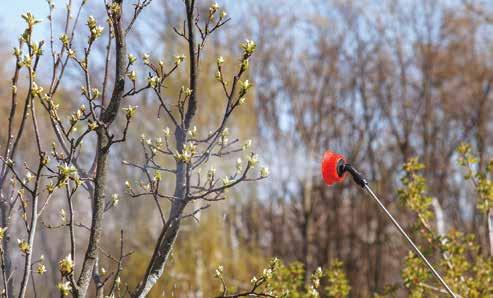

It has been a busy and rewarding few months for the QAA with progress made on the policy front, successful events held, and planning underway for upcoming events in both 2022 and 2023. Following on from our meeting earlier this year with the Office of the Honourable Grace Grace MP and the Office of Industrial Relations, the QAA was asked to review and submit feedback on Safe Work Australia’s Guide to Managing Risk of Tree Trimming and Removal Work. This document is currently up for renewal to determine if a review of the Guide is necessary and whether it reflects the current situation in the industry.
After consulting with various people within the industry, QAA President Henk Morgans responded on behalf of the Association highlighting a number of concerns. Of particular note was the section around bringing in independent twin line standards for tree climbing, as well as the importance of having industry representatives be part of further discussions before any change in legislation is recommended. We look forward to furthering these discussions with the relevant parties moving forward.
The QAA headed to Cairns in July for a weekend of knowledge sharing, climbing challenges and camaraderie.
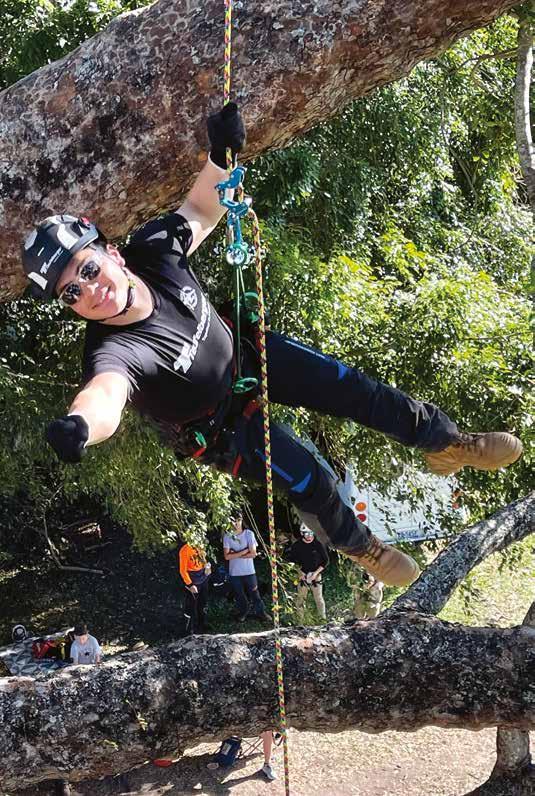
The weekend kicked off with our Competition Climbing Techniques Workshop on Friday 22 July. During the workshop QAA President Henk Morgans gave attendees an overview of the different events and techniques used at the National Tree Climbing Competition.
The following day, 37 climbers took to the trees to compete in our Freestyle Climbing Competition. All climbers got two runs initially with the top 15 competitors progressing to the Qualifier round where the tree set up was changed slightly and more bells were added to the run. Of these 15, seven climbers made
it through to the final where the tree was again changed up.
Congratulations to all those who competed, particularly our top seven who finished as follows:
• Stefano Gentilozzi (69.38 seconds)
• Chris Maata (87.03)
• Shay Williams (88.49)
• James Gigliotti (98.89)
• David Williams (105.47)
• Jayden Haycraft (106.94
• Seb McDonald (118.22)
The Spirit of the Competition winners were Jess Hamer (Overall winner) and Nathaniel Van Pelt (FNQ winner).

Events such as these don’t just happen which is why we sincerely thank the sponsors and supporters who helped make our Cairns weekend possible:
• Event sponsor: Vermeer
• Trade sponsors: Inspiration Trees, Makita, Tree Arrangements, and Teufelberger
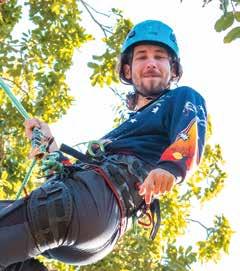
• Special thanks to: Advanced Vegetation Management, Cairns Jockey Club, Century Cranes, Global Hire and Services, and Mark and Geraldine Boston who drove the QAA trailer and gear up and back from Brisbane.
On Monday 12 September QAA President Henk Morgans hosted an open conference call for both members and non-members. During the online session, Henk took attendees through what is currently happening with the Association before turning the conversation over to them to provide feedback and ask questions.
Thank you to those who attended and gave their thoughts and opinions on the QAA and the state of the industry in general. It was great to be able to bring the community together to share issues and advice.
30 Year Gala Dinner
Our 30 Year Gala Dinner on Saturday 19 November is fast approaching and we can’t wait to catch up with friends in the industry. Ticket sales have been strong with over 80 per cent of tickets already sold at time of writing. We are thankful and excited that we’ll be rounding out our 30 year celebrations with so many of you.
For more information and to reserve your seat, scan the QR code above.

As part of the dinner, we will be celebrating outstanding efforts by people and organisations within the industry during our awards ceremony. Nominations closed in September with the shortlisted nominees now published on the QAA website to be voted on by the public. Voting closes on Monday 31 October with the winners announced at the dinner.
As is QAA custom, we like to recognise fantastic achievements with a prize or gift voucher. If you would like to donate a prize or become a sponsor of the event, please contact the QAA Office via email or phone.
The QAA’s 2022 Annual General Meeting (AGM) will be held at the QAA Head Office on Saturday 29 October 2022. The meeting is open to all members of the QAA who are warmly invited to attend.
At the meeting, members will have the opportunity to find out about the QAA’s operations and finances, speak about any items on the agenda, and vote on any resolutions proposed.
Members will also be asked to vote to accept the minutes of the last AGM, the annual report, the auditor’s report, and the annual financial statements. The 2022-23 Executive Committee will also be elected at the AGM.
Information will be sent to all QAA members this month. If you have specific questions or would like to find out more information about becoming a member of the QAA prior to this meeting, please email office@qaa.net.au or call (07) 3821 1488.
For info call QAA on (07) 3821 1488, email office@qaa.net.au, or you can go to www.qaa.net.au. Follow us on Facebook (QueenslandArboriculturalAssociation), Twitter (QLD_Arb_Assoc), Instagram (qaa_arborist), LinkedIn (queenslandarboricultural-association) or via the QAA App. AA
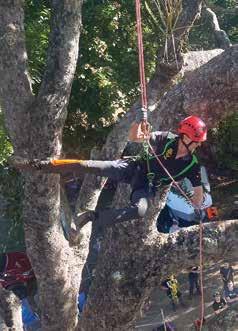
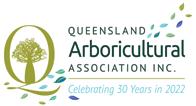
Safe Work Australia has announced the launch of mental health resources to support regional and rural small businesses in NSW.

The NSW Government has launched free mental health resources to support regional and rural small businesses, with more than 60 per cent of those businesses indicating mental health or stress for themselves or their staff is a concern.
SafeWork NSW Director for Health and Safe Design Jim Kelly said that with so much going on in regional NSW, from floods to the pandemic, healthy workplaces need to be part of the solution to support communities to recover from these challenges. “Workplace mental health initiatives deliver strong and
positive outcomes for NSW businesses and their employees.
We spend a third of our life at work, so making sure mental health is promoted, managed and supported in the workplace is extremely important,” Mr Kelly said.
“Regional businesses face unique challenges including poor service support, distance, cost, isolation, seasonal and labour issues, traumatic events and hesitation to seek help for mental ill-health.
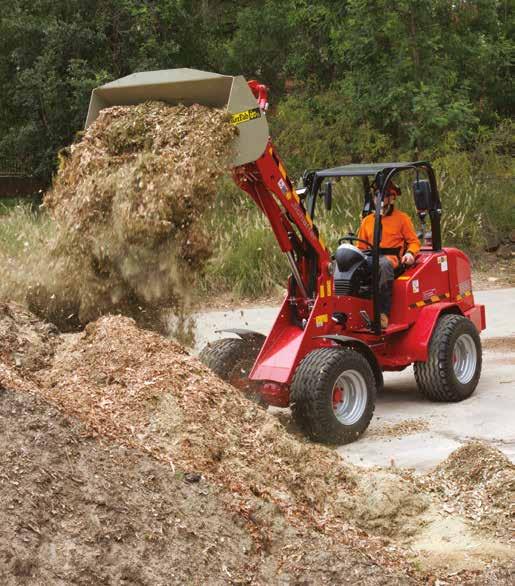
“The new Regional Resources Kit outlines positive actions and links to support services to help these businesses create a positive and supportive work environment. It has easy actions business owners and leaders can take towards a mentally healthy workplace, no matter their region, size or industry.
“The NSW Government also offers a free and confidential coaching service to help regional businesses achieve big benefits with small changes. Tailored coaching is delivered online or over the phone at a time convenient to the business owner.”
For more information visit www.nsw.gov. au/mental-health-at-work/mental-healthat-work-resources AA
Mosman Council in Sydney North Shore has implemented the use of the

calculate the carbon stored in existing trees.
Visitors to Balmoral Beach and reserve can now see firsthand the important role the impressive figs lining The Esplanade play in the area’s local environment through a free interactive app. After downloading C MyTrees from the App Store or Google Play, with the app open, users can scan a QR code displayed at each tree to check its biometrics and levels of carbon storage. Council’s arborists assessed the trees so that the app can display their level of CO2 uptake and ever-increasing carbon sequestration. The CMyTrees app has been designed to display and share the carbon storage in large trees around Australia via a real-time dashboard to raise awareness of their environmental importance, particularly in urbanised areas.
For more information visit mosman.nsw.gov.au AA


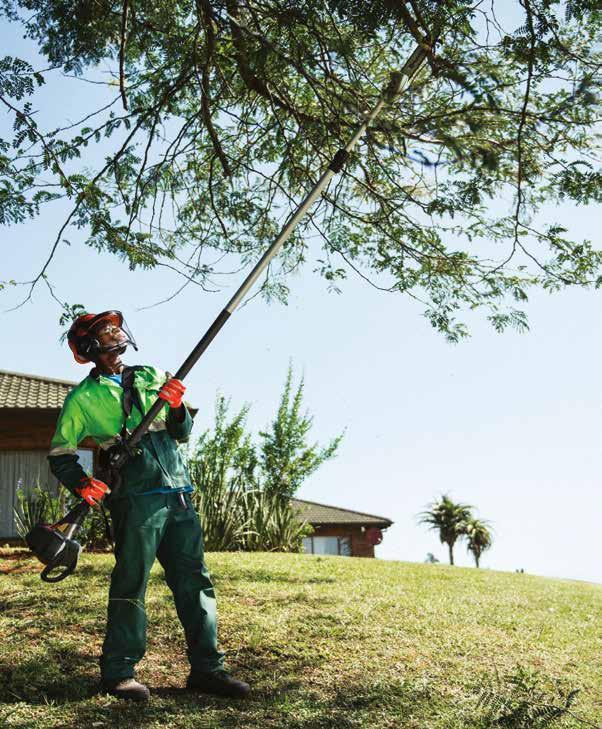



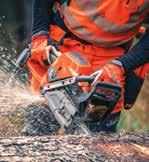
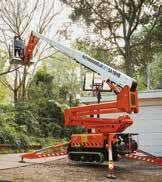

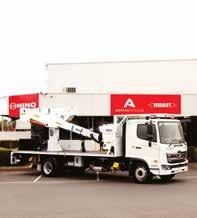


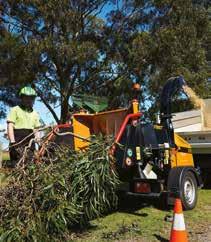


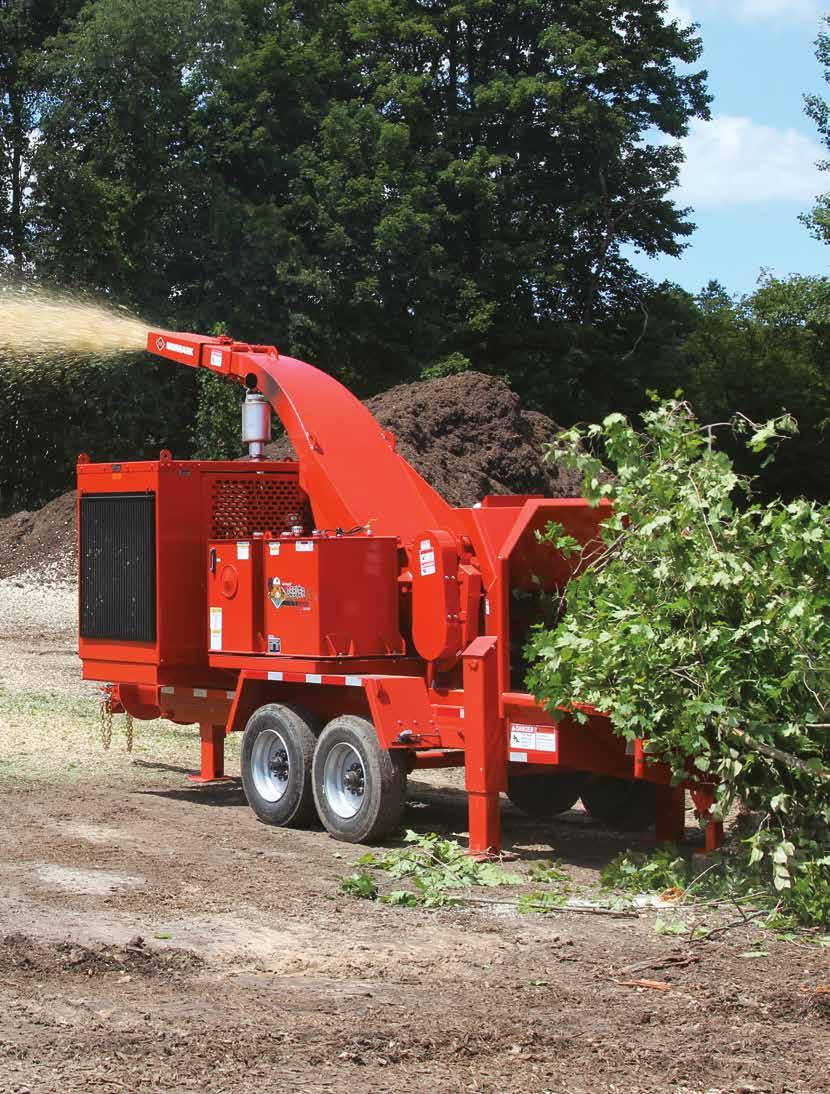
The NES specifies that the timing and duration of annual leave must be agreed between the employer and employee. As such, an employee generally cannot insist on taking annual leave unless it has been approved by the employer.
An employer must not unreasonably refuse an employee’s request to take annual leave.
There are limited circumstances where an employee can be required to take annual leave and an employee can insist on taking annual leave.
In limited circumstances, an employer or employee can insist on the timing and duration of annual leave.
An employee may only be required to take annual leave in the following circumstances:
• Shut down/closure terms: in accordance with shut down/closure terms in a Modern Award or Enterprise agreement, so long as those terms are reasonable
• Excessive leave terms: in accordance with excessive leave terms in a Modern Award or Enterprise agreement, so long as those terms are reasonable
• Other Award/Agreement terms: individual Modern Awards and Enterprise Agreements may specify other occasions where an employee may be reasonably required to take annual leave, so long as those terms are reasonable
• Award-free employees: in accordance with a reasonable requirement for an award-free employee (who is also not covered by an enterprise agreement) to take annual leave. Examples of a ‘reasonable requirement’ for an award-free employee to take annual leave include where the employee has accrued excessive leave, or where the employer’s enterprise is being shut down for a period.
Employers and award-free employees can reach agreements about taking annual leave in advance. Modern awards and enterprise agreements may also include terms about taking annual leave in advance.
Most modern awards include a term specifying that an employer and employee can agree in writing to a period of annual leave being taken in advance. In most cases, the modern award requires that any such agreement:
• States the amount of leave to be taken in advance and the date on which leave is to commence; and
• Be signed by the employer and employee (and the employee’s parent/guardian if the employee is under 18 years old)
• Must be kept as an employee record
It is important to check the relevant modern award/enterprise agreement for the terms applying to your employee.
What if the employee owes annual leave when their employment ends?
Most modern awards include a term allowing employers to recover monies owing to them if an employee has taken annual leave in advance and has not accrued sufficient leave by the end of their employment to justify the amount of leave taken in advance.
It is important to check the relevant modern award/enterprise agreement for the terms applying to your employee.
Employers can use leave policies and procedures to specify expectations for how and when requests for annual leave should be submitted, and to specify periods of time when annual leave requests may not be approved due to operational requirements. As long as these policies and procedures are reasonable, an employee may be expected to comply with them before a leave request is approved.
It is recommended that requests for annual leave be required in writing (using an application form if practicable), so that these can be retained as employee records to assist with time and wages record keeping.
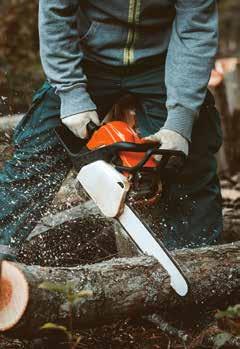
If you require assistance with forms, contact TTIA by email at ttia@ttia.asn.au as we have a comprehensive set of templates available to Members.
TTIA is regularly asked by members their rights and obligation regarding the operation of annual leave entitlements.
Diverse Property Services (DPS) has in short time experienced strong growth, with the Mudgeebased tree services and vegetation management specialist having swiftly built both its equipment fleet and the scope of its services since its establishment in 2018, enabling it to carve out a strong niche in the local market.
Second-generation arborist Chris Jarvis was able to draw on significant industry experience in getting the business off the ground, having originally started out working for his father’s Central Coast-based company Treecorp Solutions in 2006 as a general labourer and groundsman.
“I did my time on the ground, as everyone else does, and from there moved into smallscale climbing work, and after moved up into management, becoming the operations manager,” he told AA
“I decided to go out on my own after moving to Mudgee. I started the business, originally doing small-scale tree and garden maintenance work, and quickly progressing to doing some contract climbing and seeing there is a market here for larger-scale work.”
This in turn led to Chris buying a truck and chipper, and also taking on a few employees, with DPS having since grown to become responsible for the majority of the tree work carried out in the Mid-Western Regional Council area.

GMT050 TTC grapple saw significantly reduces project work times
Chris told AA that he has always maintained a strong interest in “mechanised arb”, closely following developments in the European and American markets in seeking to integrate new technologies at a local level and ultimately make his work processes more efficient.
With DPS taking on increasingly extensive and demanding project work, he had eventually made the decision to add GMT Equipment’s GMT050 TTC grapple saw to his equipment fleet, and the business hasn’t looked back since.
“After winning a couple of big contracts, and really struggling to get climbers, and struggling to take on the workload myself, I decided to pull the trigger, and we bought the GMT050 TTC and a Doosan wheel excavator,” he said.
“With the help of our hydraulics expert in town, we put it all together, and now we do large-scale roadside works.”
Chris explained that the GMT050 TTC has fundamentally changed the way DPS goes about its daily operations, enabling it to complete larger, more involved projects in significantly shorter time frames.
“Before we purchased the GMT050 TTC, we were running two climbers on a standard roadside job, and the job would be taking twice as long,” he commented.
“Now, I just operate the machine from the cab myself, and I have one or two ground workers who operate a remote-controlled chipper, and we do it in half the time with pretty well zero climbing.”
Less need for climbers: projects less labour-intensive Chris told AA that since adding the GMT050 TTC to its equipment fleet earlier this year, there has been close to a 60 per cent decrease in DPS’s climbing operations, with it being very rare that climbers are now required for roadside project work.
Unlike large forestry-specific attachments, the GMT050 TTC is designed to cut smaller branches or trunk sections from every direction (it has minimum gripping diameter of 8cm and maximum single cut diameter of 50cm), thanks to its flexible, rotating attachment to the boom.
Trunk sections up to 72cm diameter can also be removed by rotating the grapple saw around to cut from both sides.
This makes it particularly suitable for arborists and improves operator visibility, while smaller pieces require less processing space on the ground and are much easier to handle, often capable of being directly transferred to a chipper or truck.
Meanwhile, the Total Tree Control (TTC) system enables operators to keep or hold a tree section in position, via a unique tilt and swing blocking feature only found on GMT Equipment grapples.
“The GMT050 TTC is extremely easy to learn to operate over a short period of time and is very versatile,” Chris said.
“It’s got so many points of articulation, and the rotation and the way the tilt function
works means you can get the saw in behind vertical branches, as opposed to a normal grapple saw, where you can only work directly in front of you.”


Chris said that on an average day the GMT050 TTC is racking up around 10 hours of operations, with it making projects much less labour-intensive, paving the way for safety benefits and an improved crew mindset.

“I can split guys up to do another job because I don’t need that much man-power while it’s on site,” he said.
“Another thing it does, is when there are trees that have fallen by the roadside, we eliminate as much chainsaw use as possible, because it is able to reach out, cut the material and then feed it directly into the chipper.”
For more information on Diverse Property Services call Chris on 0427 559 622 or email dpsmudgee@gmail.com. For further details about the GMT grapple saws visit forestcentre.com.au/tree-care or go to www.gmt-equipment.com AA

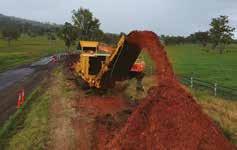
Jack Blinco from Ironjack Recycling has been around grinders and chippers since he was a child, so he knows a tough, productive and smart machine when he sees one – and he gives the Vermeer HG6800TX Horizontal Grinder a definite thumbs up.
The HG6800TX is Jack’s first Vermeer machine, purchased for his environmental land clearing business Ironjack Recycling. Based in southeast Queensland, Ironjack Recycling specialises in a wide range of projects involving vegetation clearing and natural disaster clean-up.
“Ironjack is a family-based and -run company and has been successfully operational for more than four and a half years,” Jack says.
“The last two years have really seen us grow, driven by more contract work, not just green waste and mulching projects, but diversifying into demolition works and contracts with larger developers and councils right up and down the Queensland coast.”
This growth is what led Jack to add a new Vermeer Horizontal Grinder to the business, and he says there were two main features that stood out for him with the machine.
“The first was just the high spec and production of the machine. Its ability to get through larger materials, get in and power through the big jobs for us is great.
“The second feature that stood out for us is the Damage Defence System, which is really an inbuilt metal detection system in the grinder. For the work we do in grinding green waste and in natural disaster clean ups from cyclones, floods, and large storms, you can get a large amount of steel and metal when completing the jobs. Land clearing can also bring up metal and materials harmful to the machinery so having the metal detection will help us prevent damage to the grinder and get through the waste easier and quicker,” Jack says.
In addition to the quality of the machine, Jack says the support from the Vermeer Australia team has been second to none.
“Even before we purchased the grinder, the support from the team and reps was great. Throughout the whole process, if we had any issues with the machine or questions, they were out onsite within an hour and a half, meaning our downtime has been kept to a minimum.”
• The HG6800TX features 950 hp (708 kW) in a 41,730.5kg class, and an infeed designed specifically for feeding larger materials such as whole trees and large stumps
• The Series III hard-faced duplex drum offers durability and convenient maintenance, with the ability to remove and replace single hammers and balance the drum externally
• Low side walls aid in feeding whole trees and other larger material with less restriction, reducing the need for operator interaction with the material
• The SmartFeed system monitors engine rpm and adjusts grinding speed for optimal machine performance
• The optional Damage Defence system reduces the likelihood of certain metal contaminants from entering the hammermill by reacting to the initial contact with the contaminant and reversing the feed system to allow removal of the contaminant
• The feed roller can climb up to 127cm, helping the machine to crush logs or stumps that need to be rolled, and allowing the operator flexibility for different material inputs
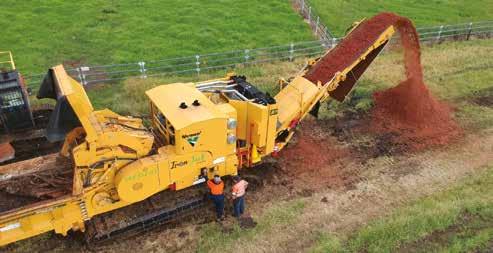
• Change screens easily utilising the optional screen hoist and the remote control or main machine controls.
To find out more about Vermeer Australia’s range of Horizontal Grinders and how they can fit into your business, head to www.vermeeraustralia.com.au
Intermercato Sweden has been producing high quality grapples for more than 25 years. Intermercato Grapples Australia started importing grapples 15 years ago into the Australian market, so they are well and truly tried and tested. Intermercato’s dual pivot pin design allows the grapple to open wider and close tighter. The company offers quite a selection of grapples and rotators to suit everyone’s needs. Feeding chippers, felling trees, removing palms, they have it all covered. Intermercato also supplies grapple saws.
To find out more about Intermercato and their range of products, contact Robert today on 0436 028 643 or visit www.grapples.com.au Keep in touch on weekly updates via their Facebook and Instagram.


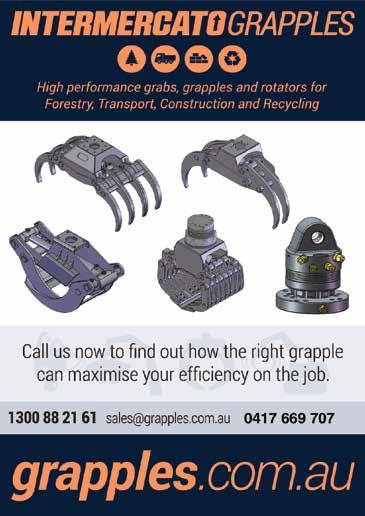
In the market for a forestry mower? Global Machinery Sales supplies the Australian market with forestry mowers/mulchers from Rayco in the USA.

When you go into the bush, you need a forestry machine you can count on. You need a loader-style mulching machine that’s purpose built from the ground up to be the most productive and reliable in a mulching application available on the market today. Rayco’s forestry mowers are these machines.
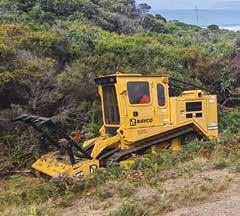

Rayco’s exclusive Super Flow closed loop hydraulic system and an advanced cooling system allows for operation of these forestry mowers in the hottest temperatures.
For the ultimate in compact, powerful mulchers, look no further than Rayco’s C200. The C200 is powered by a 200hp Isuzu diesel and tips the scales at only 8,164.66kgs.
Due to its size and weight, the C200 can be transported to and from the job easily. Its narrow profile makes the C200 the ultimate for ROW clearing on narrow lines as well as for use in larger-scale clearing projects. The C200 rides on a hi-track, steel undercarriage available with 2-speed travel and is available with 20” (50.8cm) single-grouser tracks for extreme traction or triple-grouser street pads for applications that require minimal
soil disturbance. The hi-track undercarriage promotes longer track life, reduces debris packing in the track chain, and cleans easily to save maintenance time.
Because it’s purpose-built, the C200 is loaded with features operators appreciate. Loader-style lift arms provide a mulcher lift height of 8-ft (243.84cm), making it easier for mulching taller vegetation. The operator cabin is comfortable and spacious, with a high-backed, heated seat with air-ride suspension. The rear fan is auto-reversing, reducing maintenance time. All gauges and controls are located on a large LCD display that includes a rear-view camera.
To buy new a new replacement machine from USA would cost $670,000.00 inc GST.
Currently Global Machinery Sales have Machines in stock and ready to get to work. Special Price $395,000 inc GST. Demo Machine with 120 hours $350,000 inc GST.
For more information call Global Machinery Sales on 1300 072 926 or visit globalmachinerysales.com.au AA
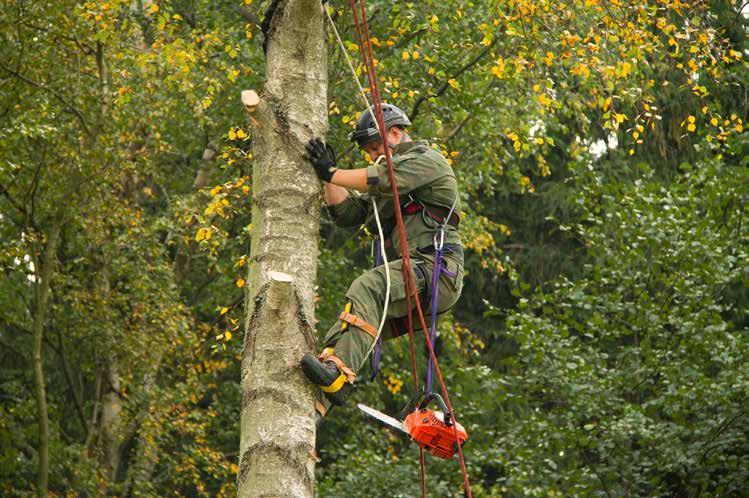

Customer satisfaction is our #1 goal. Steve from Marenaire in Coffs Harbour is a testament to that. Steve has been a proud Bandit customer for 11 years, with a 15XPC and a 1890XP chipper in his fleet with over 2000 hours on it. Steve needed a new unit that could process anything, and Bandit’s 1425 Mini Beast horizontal grinder was exactly what he needed. “It’s easy to move and get around,” says Steve. “We’ve been putting everything in it. Anything and everything to do with wood and palm.” Having a machine he can count on each day is an important factor in Steve’s business. “The Bandits are just reliable machines, they don’t break down. I can send my blades to the Sydney team to get them sharpened. They’re only a phone call away if I need them,” says Steve. Customers like Steve are the reason why we love what we do at Bandit. Our goal is simple. To ensure you have an outstanding experience with your Bandit machine every day. Welcome to the Bandit Family.
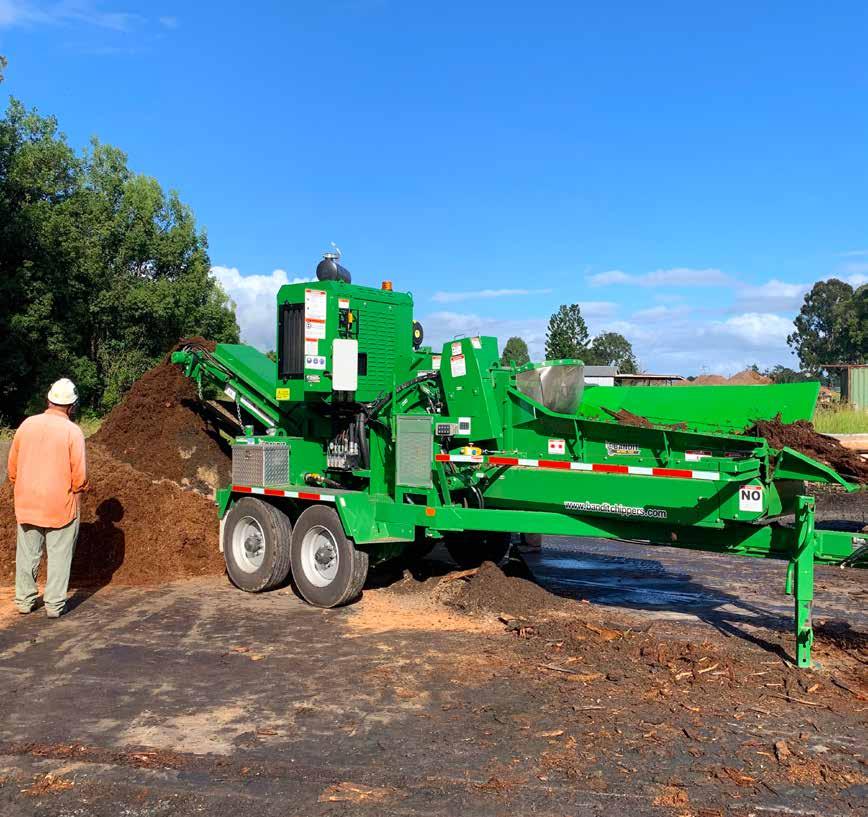
NSW/ACT
Bandit Tree Equipment 1800 681 733 www.banditchippers.com.au
VIC/TAS
Bandit Tree Equipment (03) 9801 5066 www.banditchippers.com.au
9272 6666 www.banditchippers.com.au